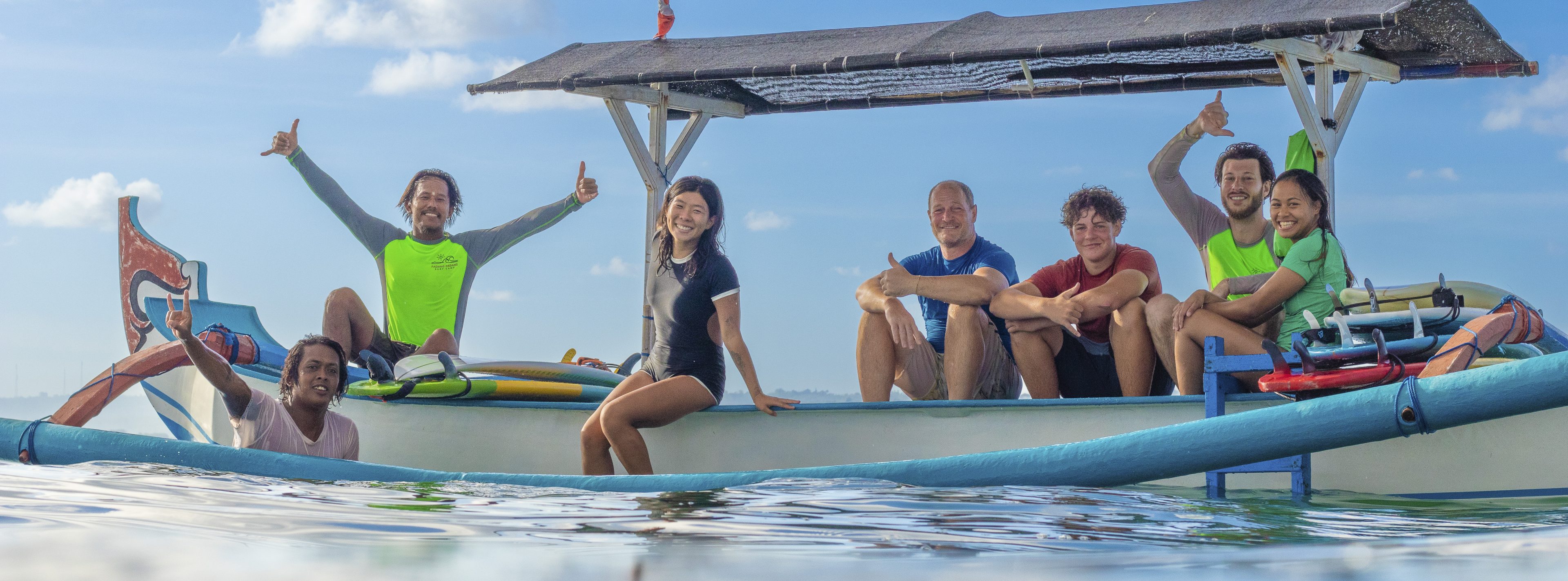
Bali Surf Spots
Surf breaks on the Bukit peninsular and farther afield

The Bukit peninsula is at the south end of Bali and is home to some of the world’s most famous surf spots. Padang Padang Surf Camp is located at the very heart of these breaks and will find the best waves for you on any given day.
No matter your ability, you will have the opportunity to surf and be mentored by expert surf guides that are determined to make you a better surfer at our Surf School.
The above image shows a map of our surf camp in relation to some of these breaks that we will be exploring in detail.
Uluwatu Area Breaks
Uluwatu is the most consistently world-class surf location in the world. The breaks in this area are known for dishing out something for everyone, whether it’s head-high offshore walls, kilometre-long rides, intense barrels, or your first wave; there is something here for everyone. The waves in this region are mostly reef breaks set beneath towering cliffs and are offshore all day for nine months of the year.
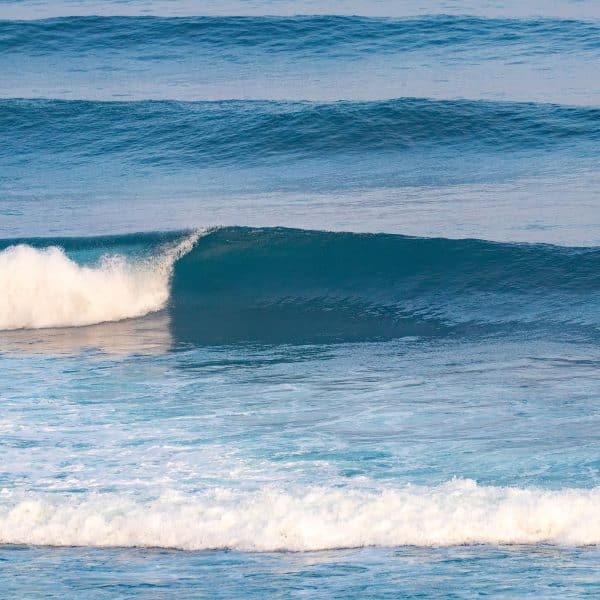
Uluwatu (Suluban beach)
Spotted by the air in the 1970s, Uluwatu was the first world-class surf break discovered in Indonesia.
It was, and remains, the most famous surf break in Bali. Renowned for the quality and consistency of the waves, which are perfect or near-perfect every day from March to November.
Check out our ultimate guide to surfing Uluwatu.

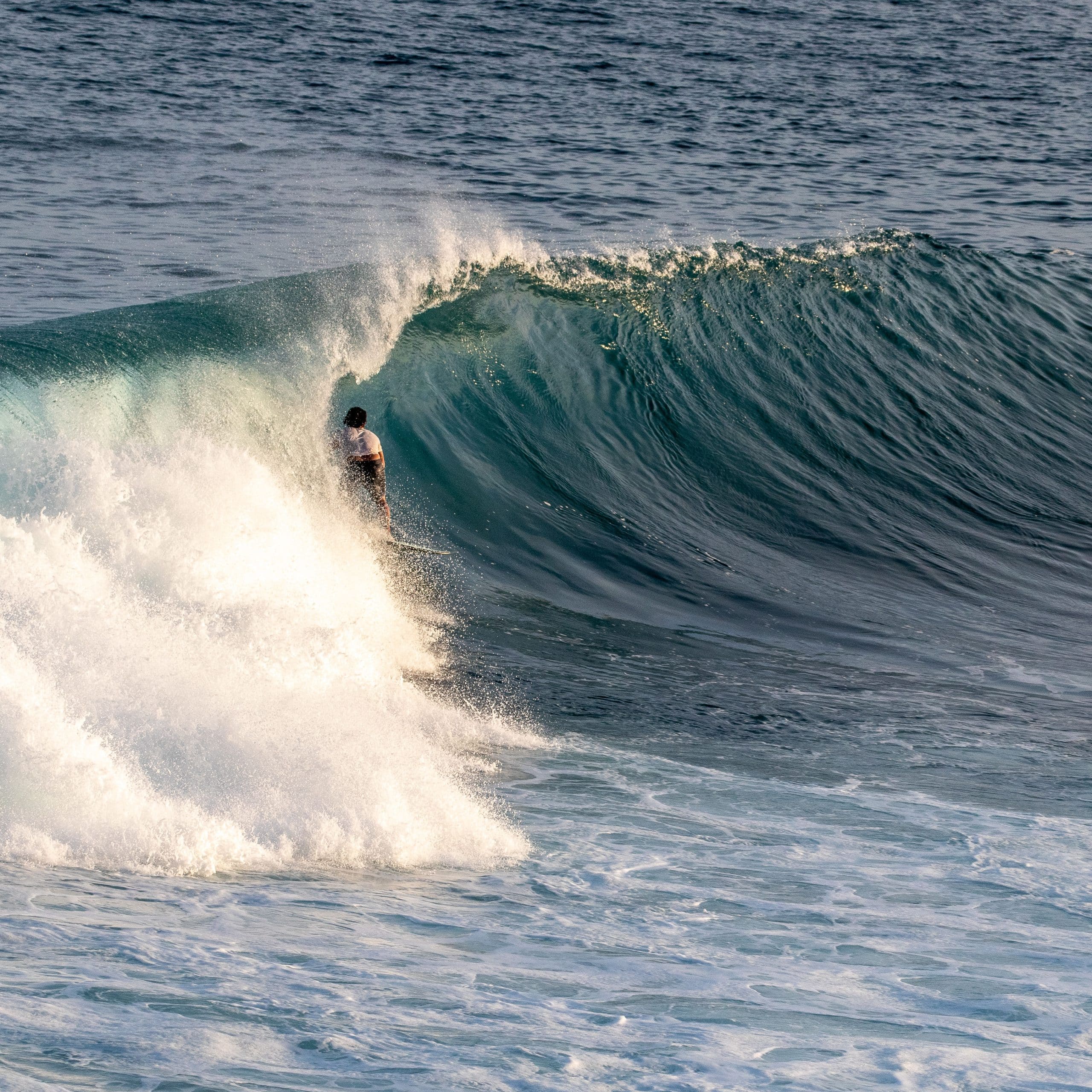
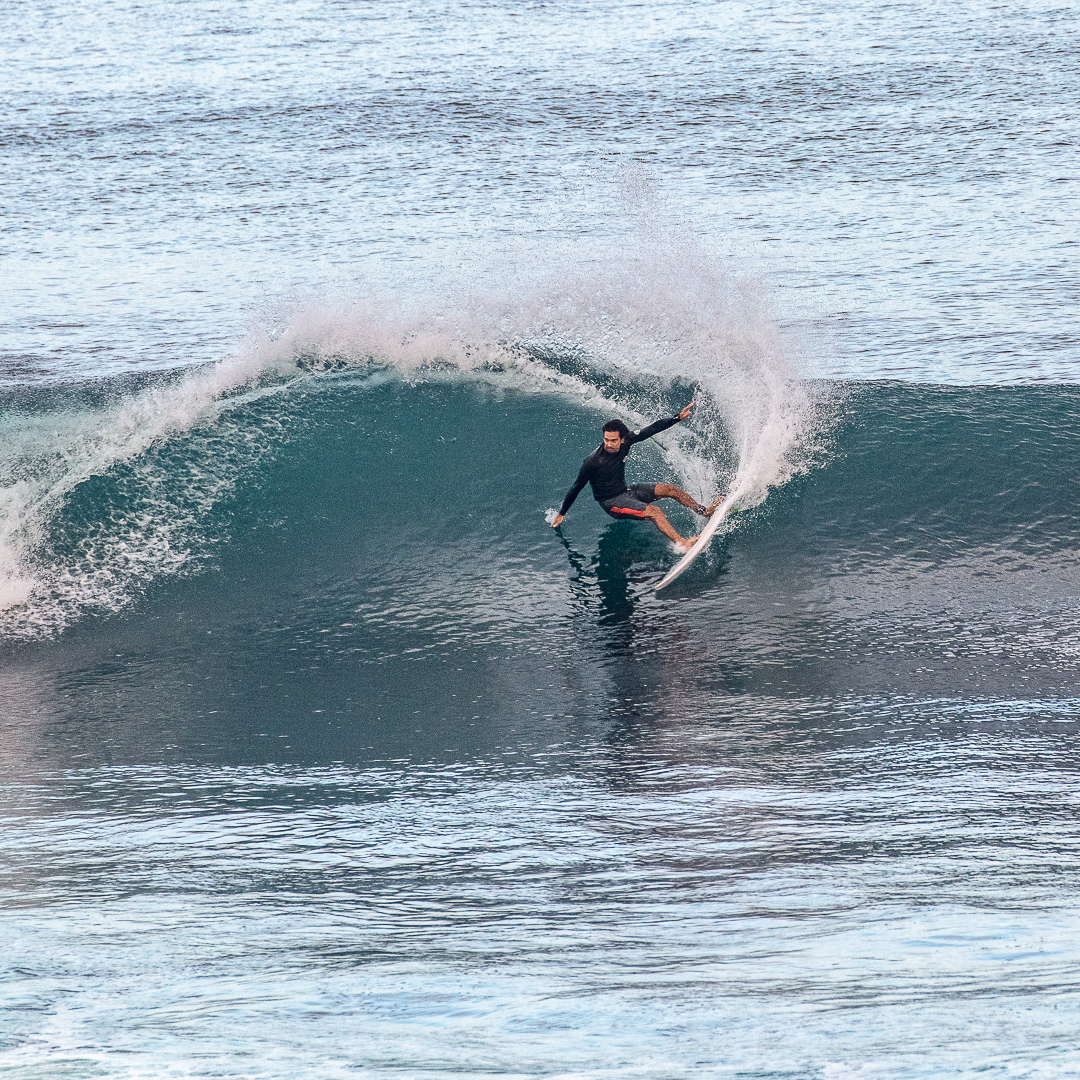
Thomas beach
The real name of Thomas Beach is Padang Padang. At the far southern end of the beach is the world-famous Balinese pipeline. In the middle of the beach is an average-quality break with a strong rip that is now getting popular with beginner surfers. Check out our complete guide to surfing Uluwatu.




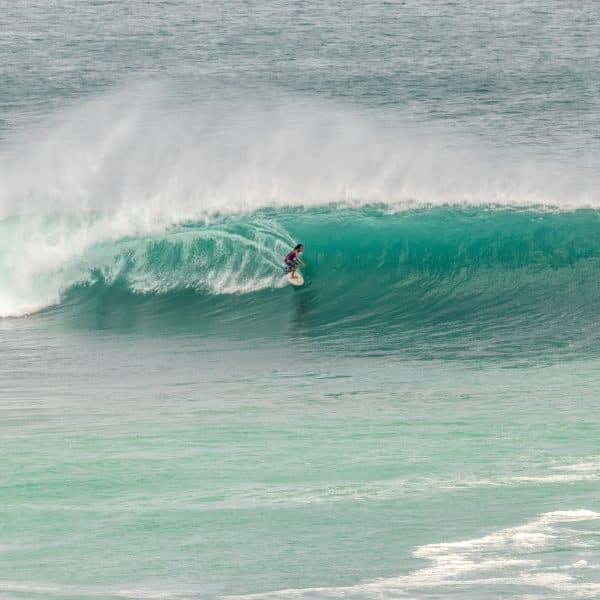
Padang Padang
Padang Padang is known as the Balinese pipeline as it is very similar to Hawaii’s very own pipeline. It is a very fast, long-barrelling wave that lives up to its reputation as the most serious wave in Bali.
The waves come in fast out of deep water and break over a shallow coral reef which makes the wave barrel. Expert surfers only.
The real name of the beach is Labuan Sait, which means little harbour in Balinese.
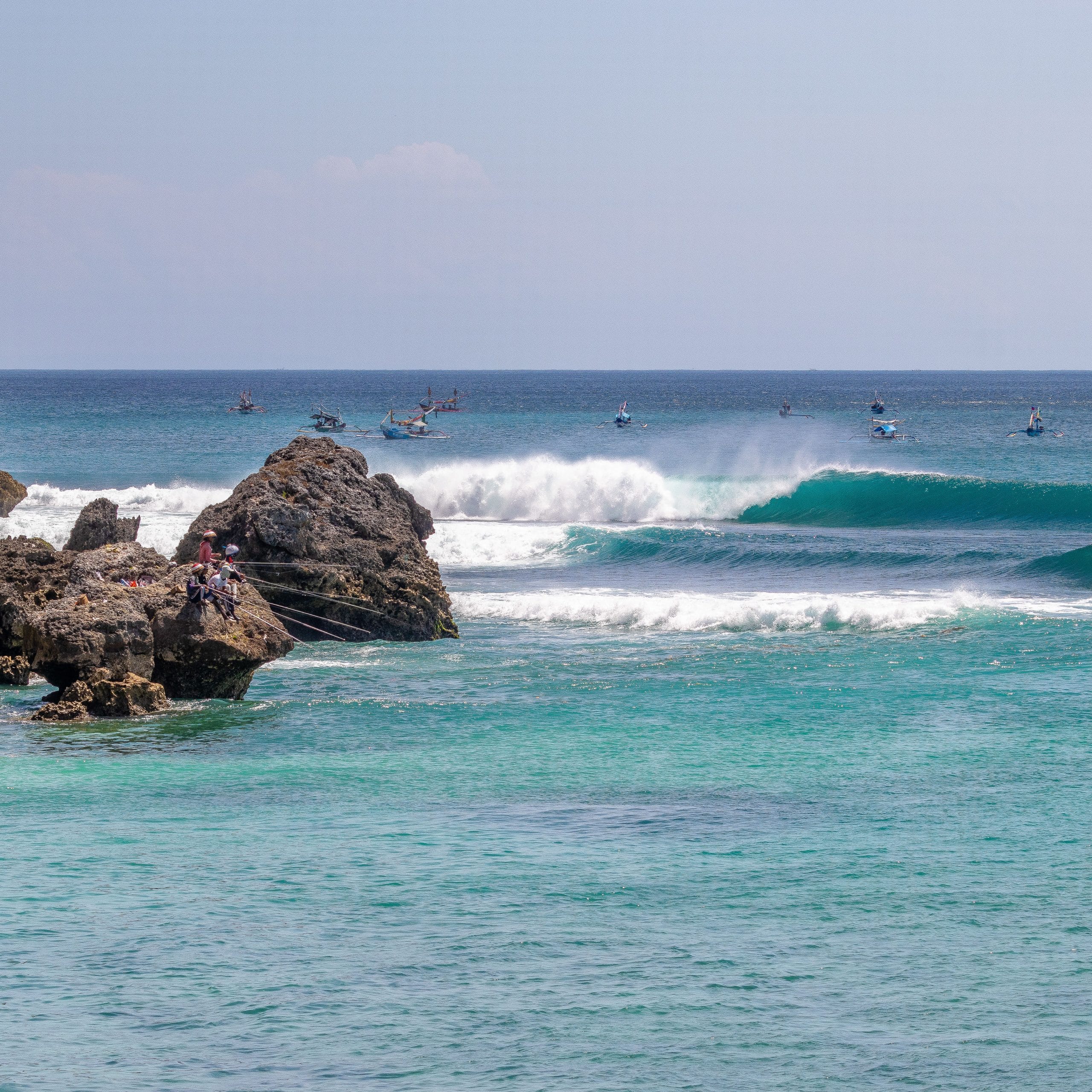
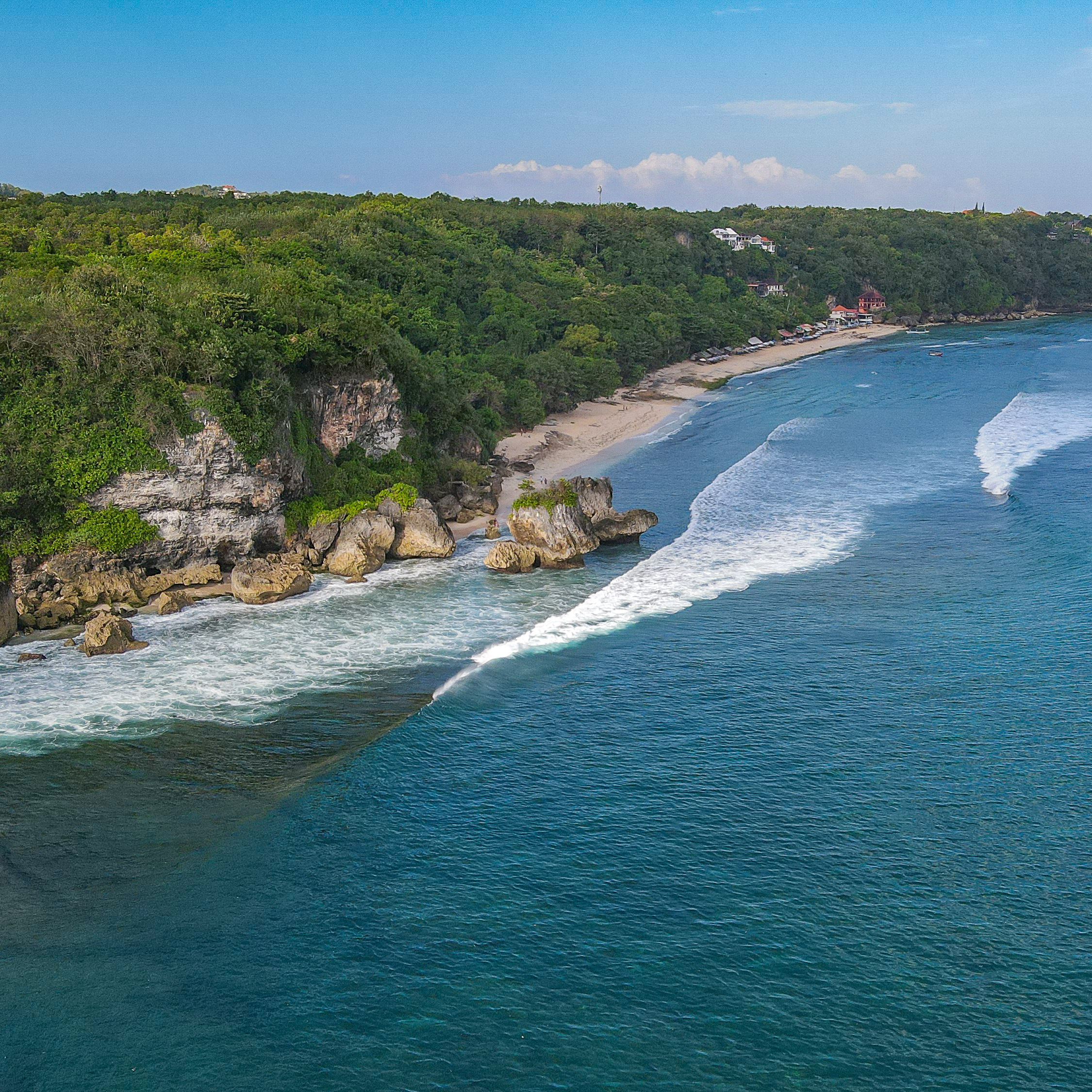
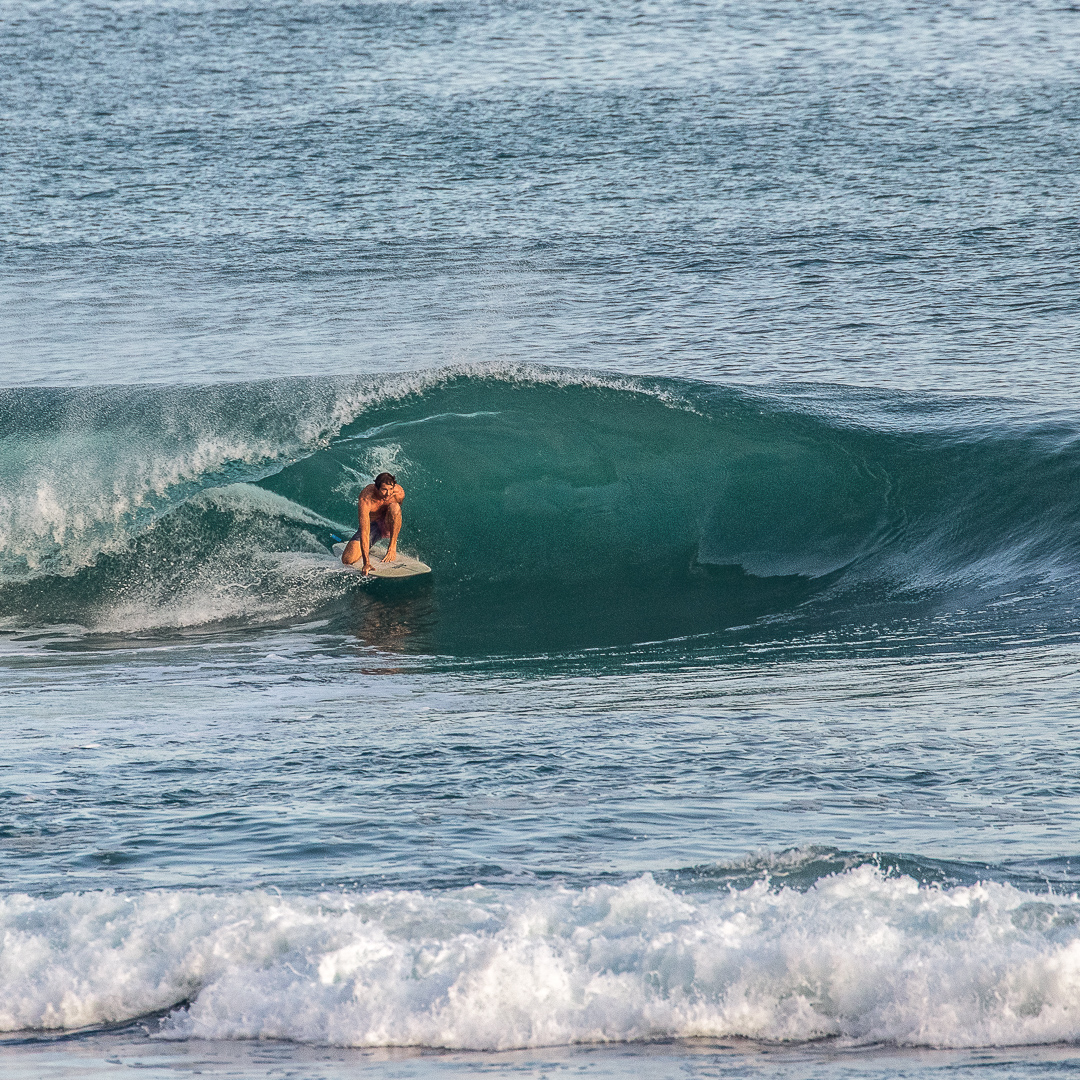
Baby Padang
Padang Padang rights is also known as Baby Padang. It is located on the other side of the channel to the world-famous Padang Padang.
But this is a soft, mellow break due to the shape of the reef and is the perfect spot for beginners learning to surf.
It breaks both left and right. The left is a long ride and can be ridden almost to the next surf break (Impossibles), while the right is a shorter ride that takes you back to the channel for an easy paddle back to the lineup. This is the spot where many local Balinese kids learn to surf.
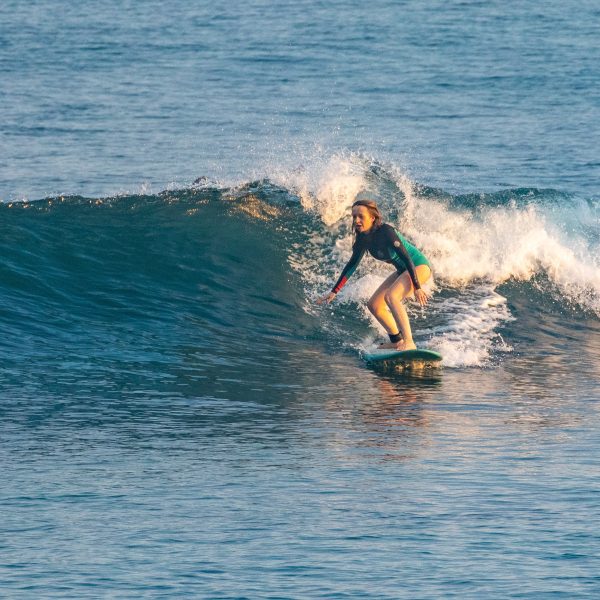

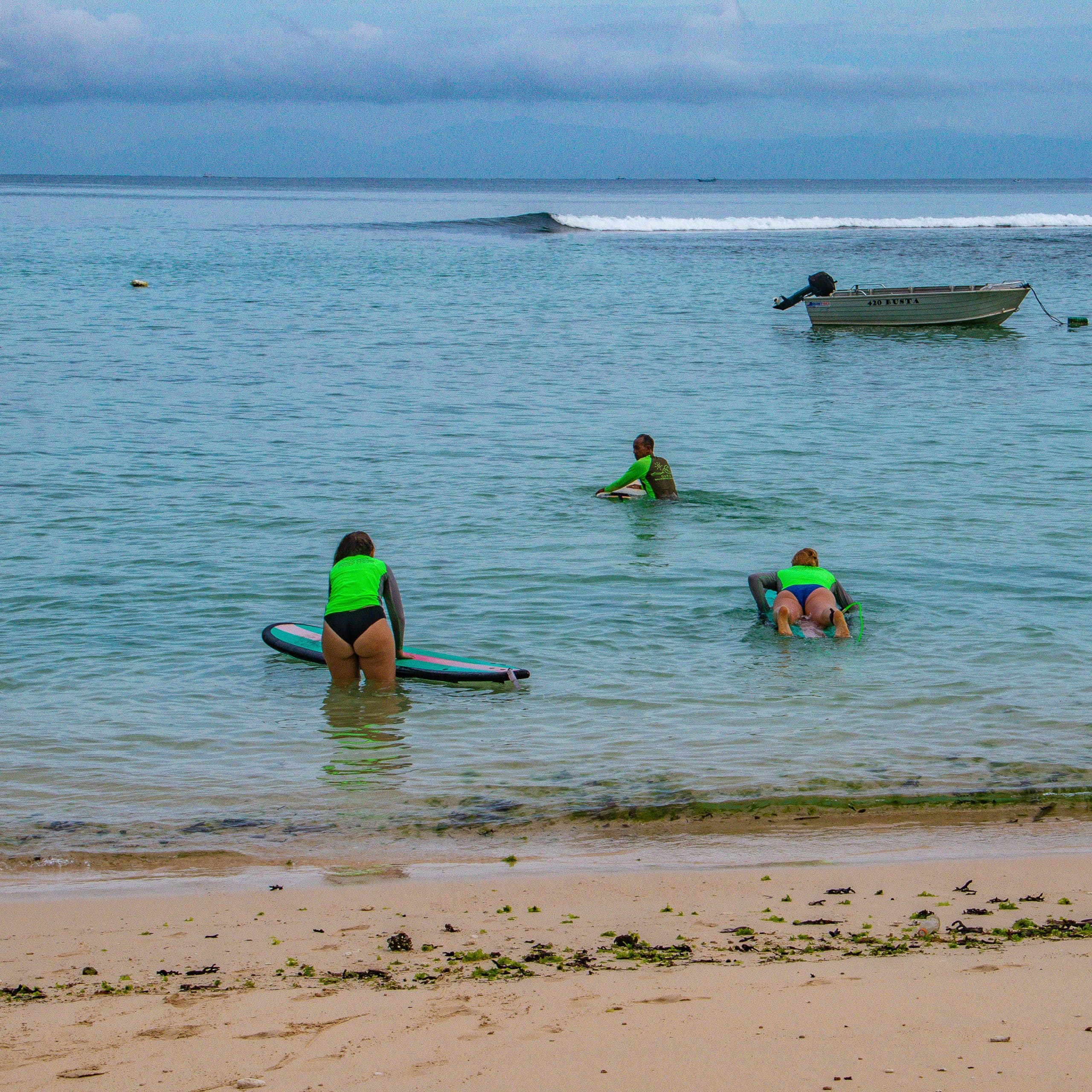
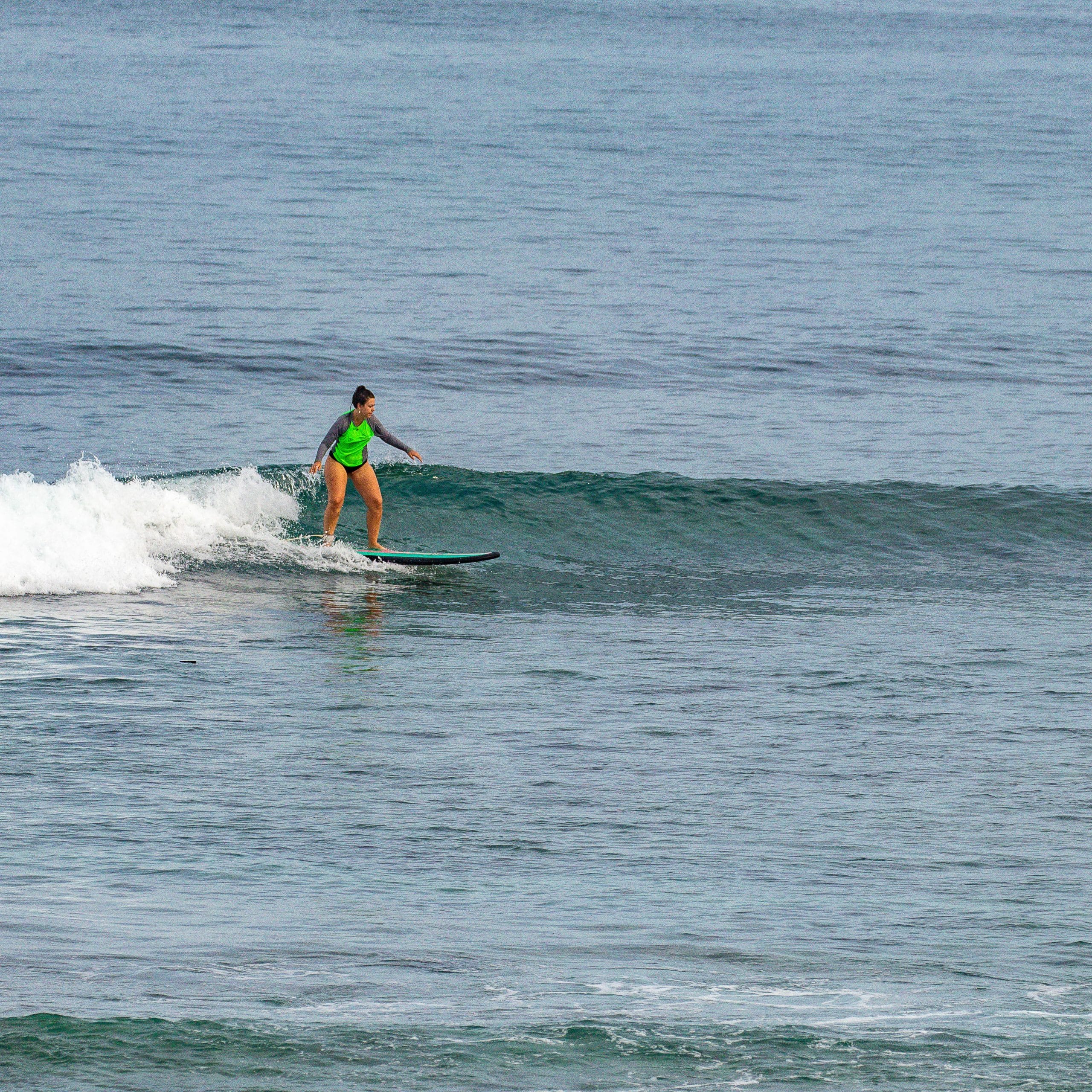
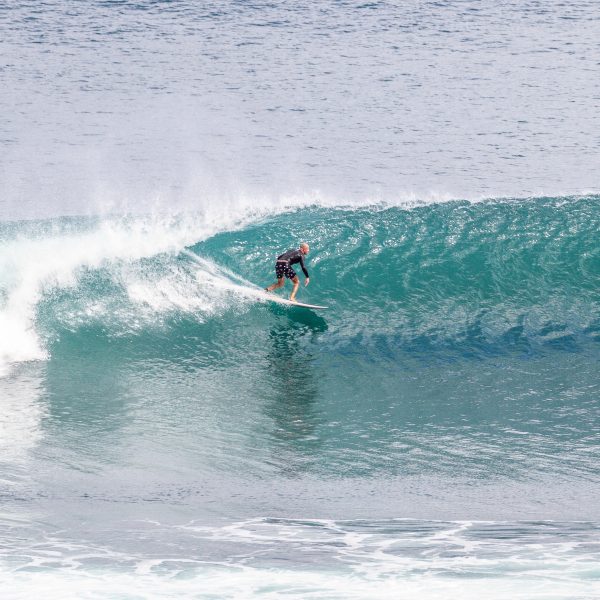
Impossibles
Impossibles is a fast racy wave that is very picturesque. There are 3 seperate peaks on this wide reef, breaking up the crowds. On the right conditions, with a good size swell and offshore wind, the sections can link up and get a ride of a mile or more to the warungs at Bingin. Due to how quickly this wave breaks, it is almost explicitly for advanced surfers but can be suitable for intermediates on smaller days.
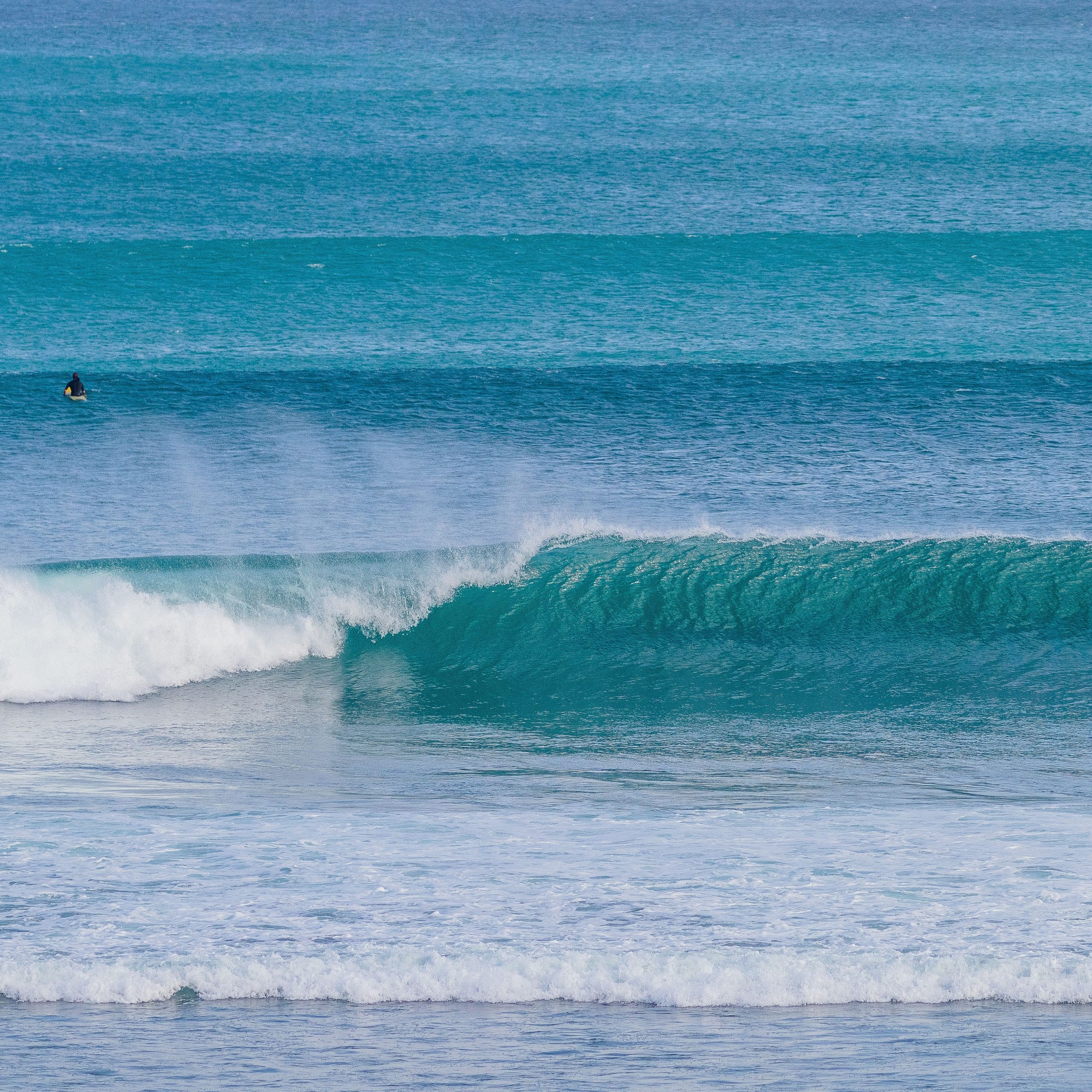
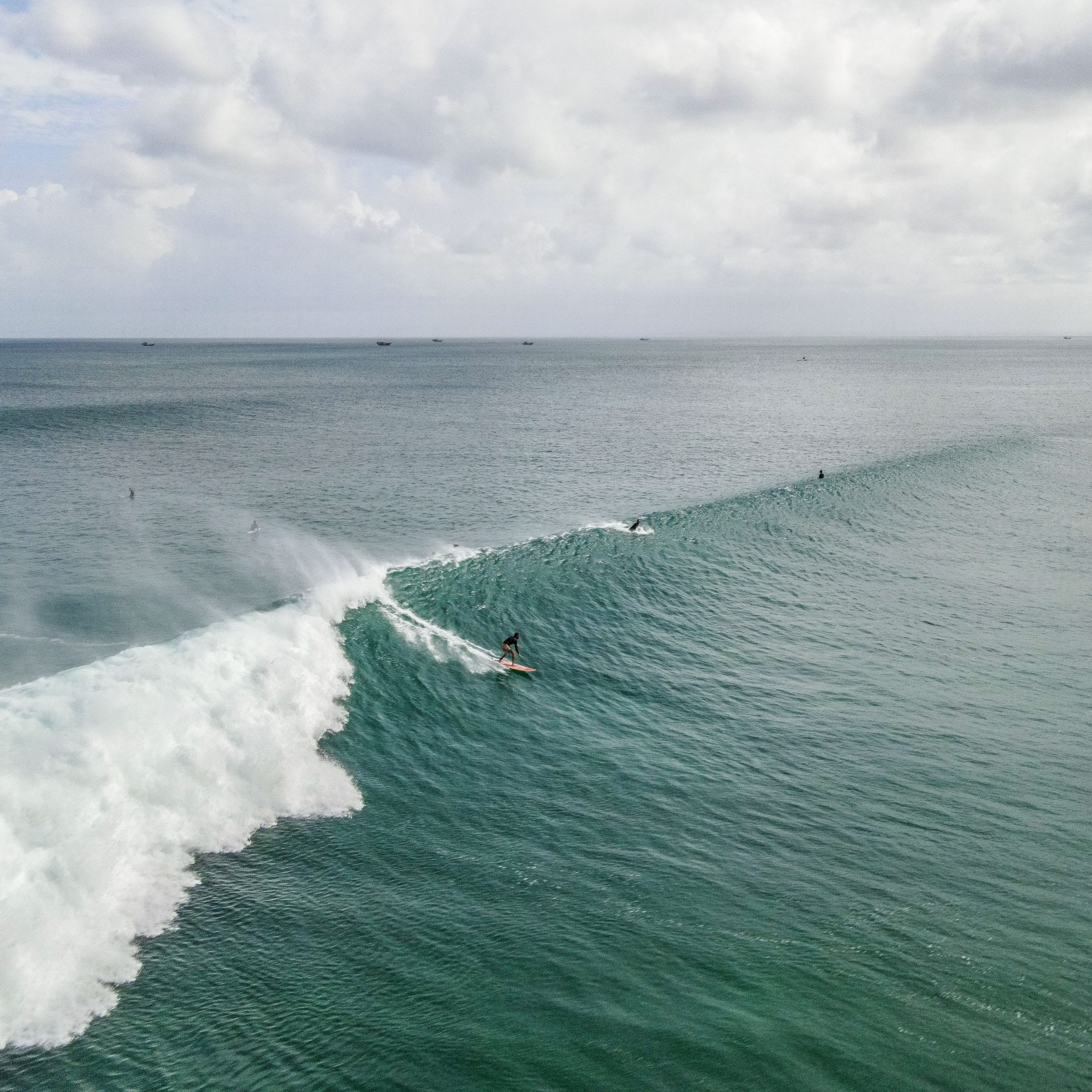
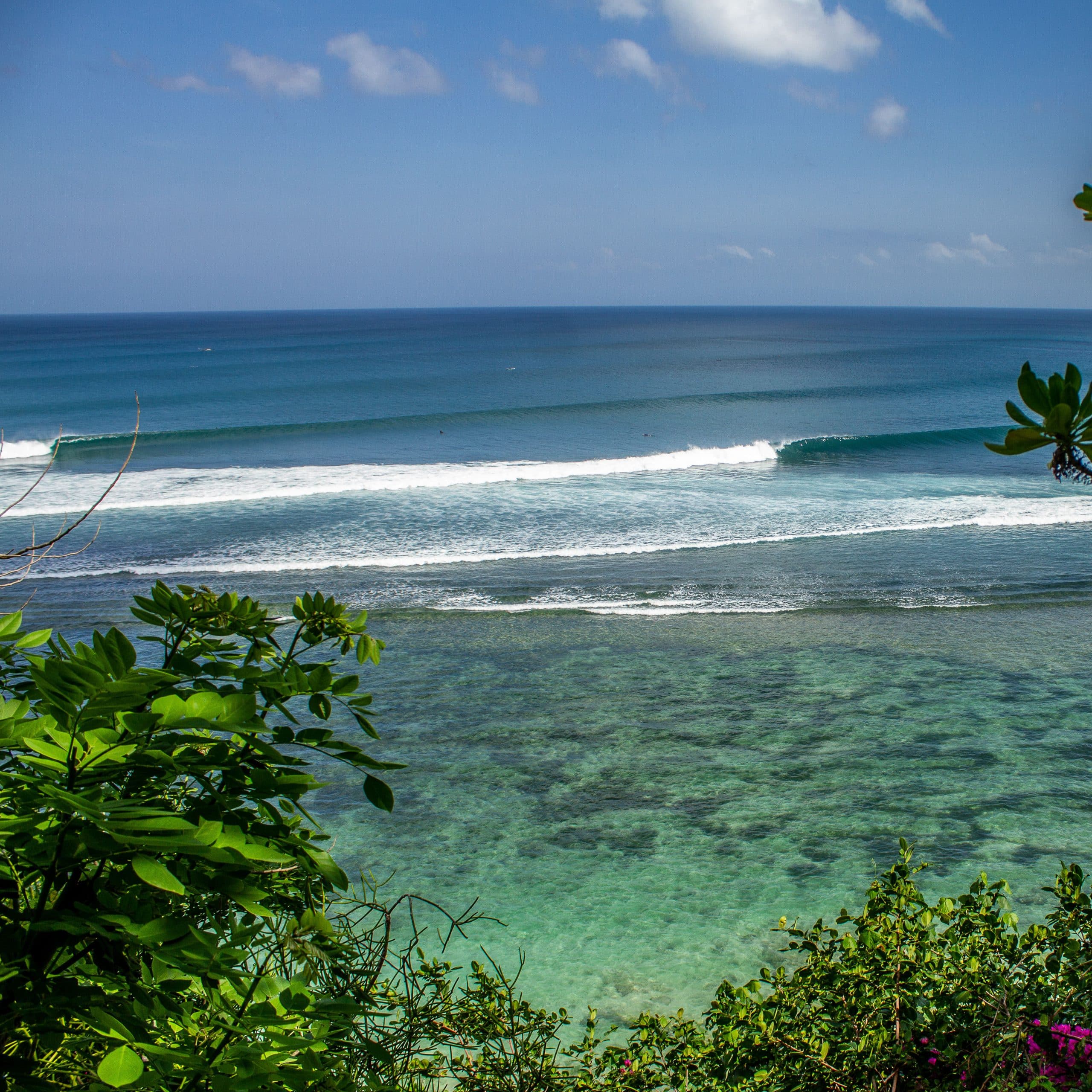
Bingin
Bingin is a perfect machine wave that works best around mid-tide. It is a very consistent wave and throws out many perfect barrels. If you want to practice barrel riding lefts – Bingin could be the perfect location. At low tide, it can be very shallow and for expert surfers only. High tide can be perfect for intermediate surfers on a small day, but primarily only suitable for advanced surfers and due to the highly localized nature of the spot, best to go with a local surf guide.
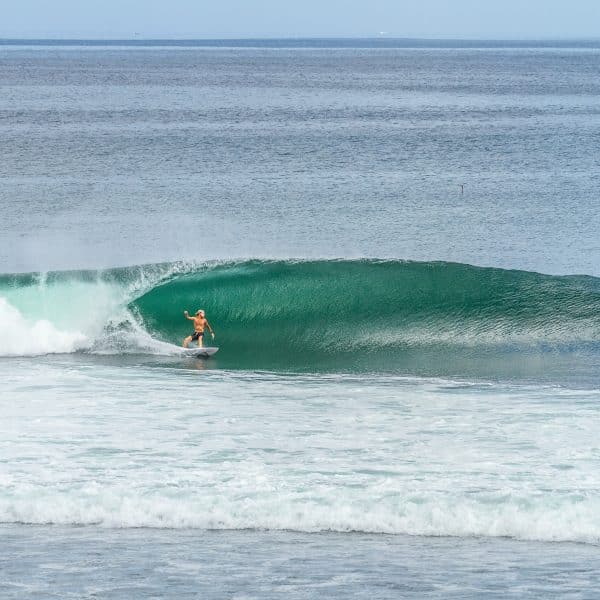
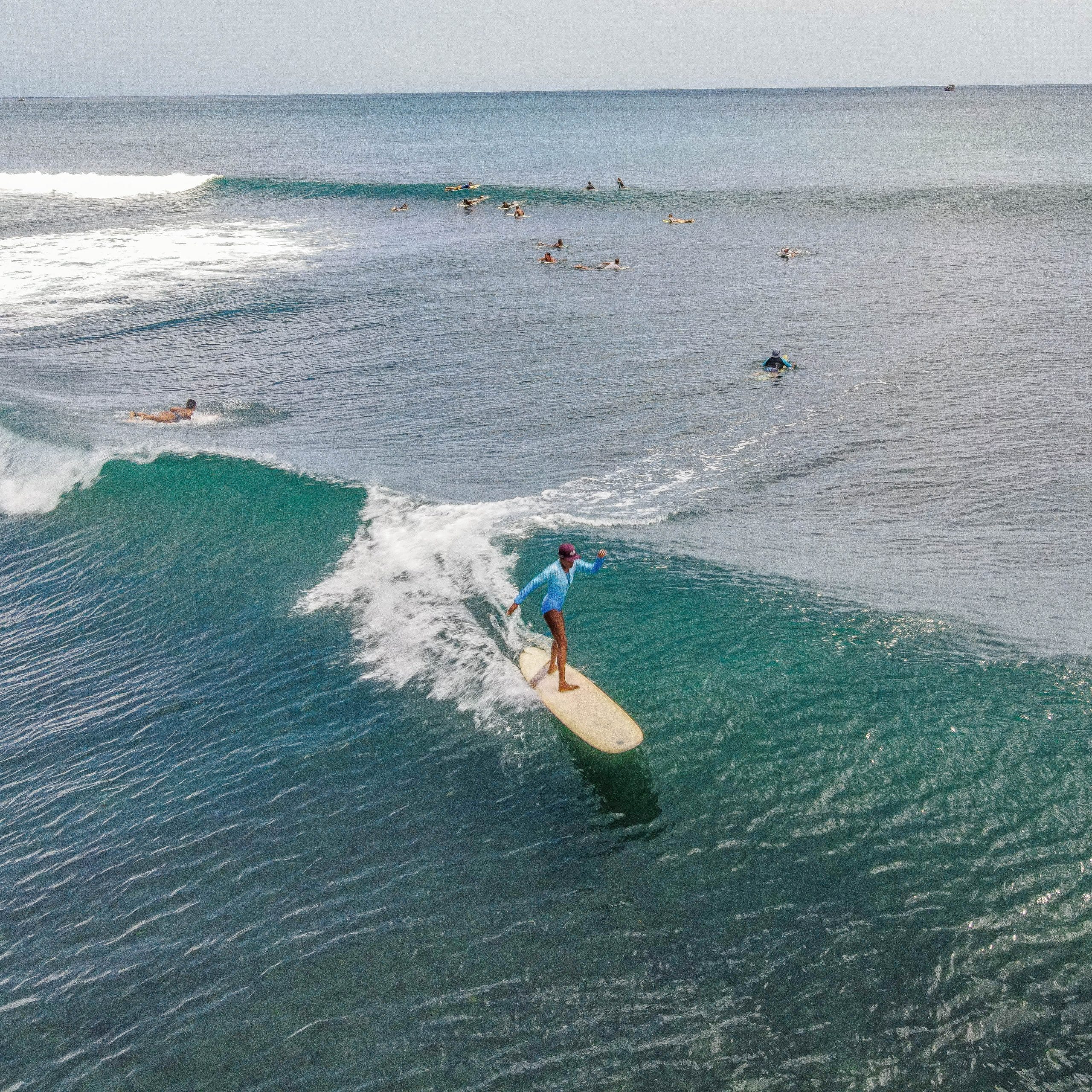
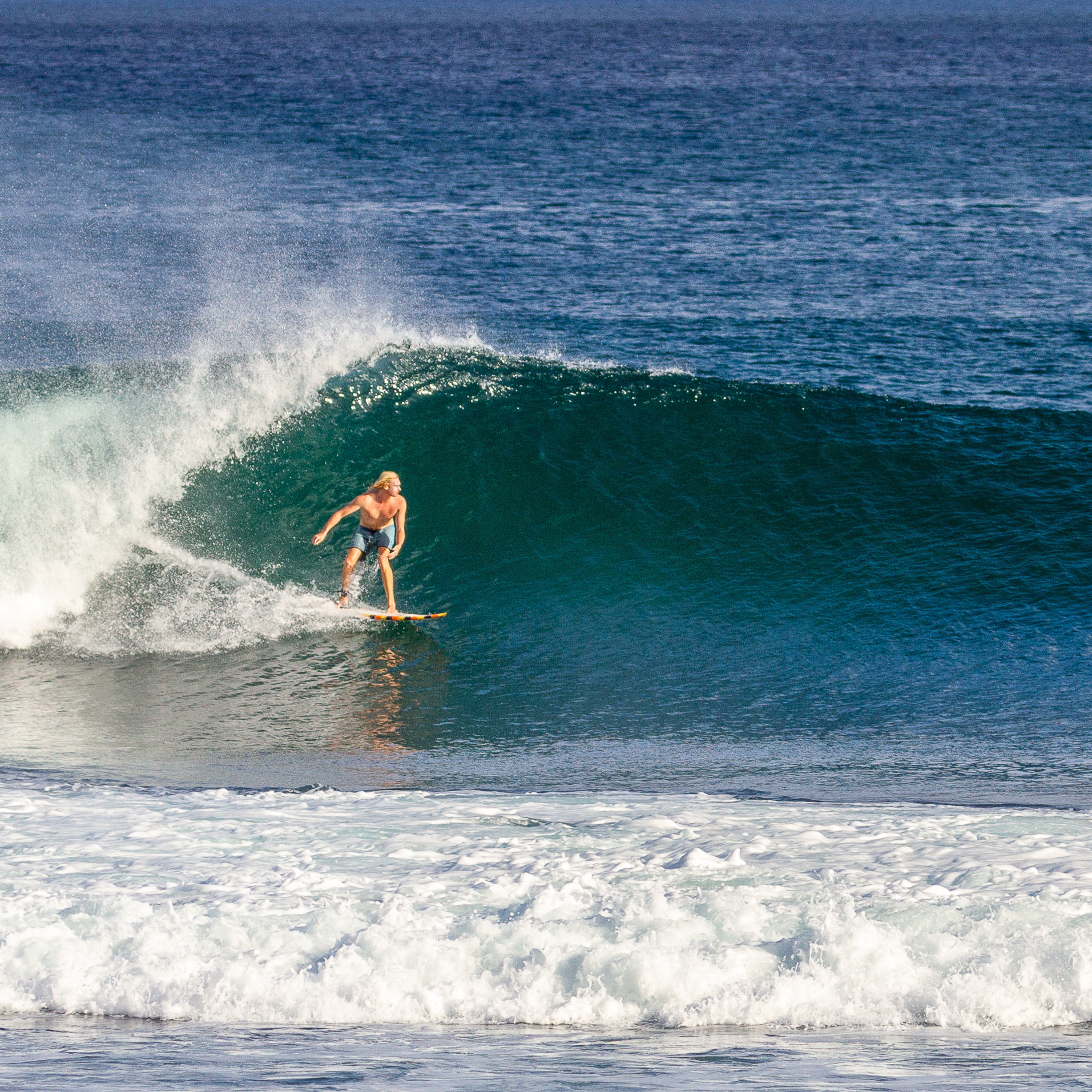
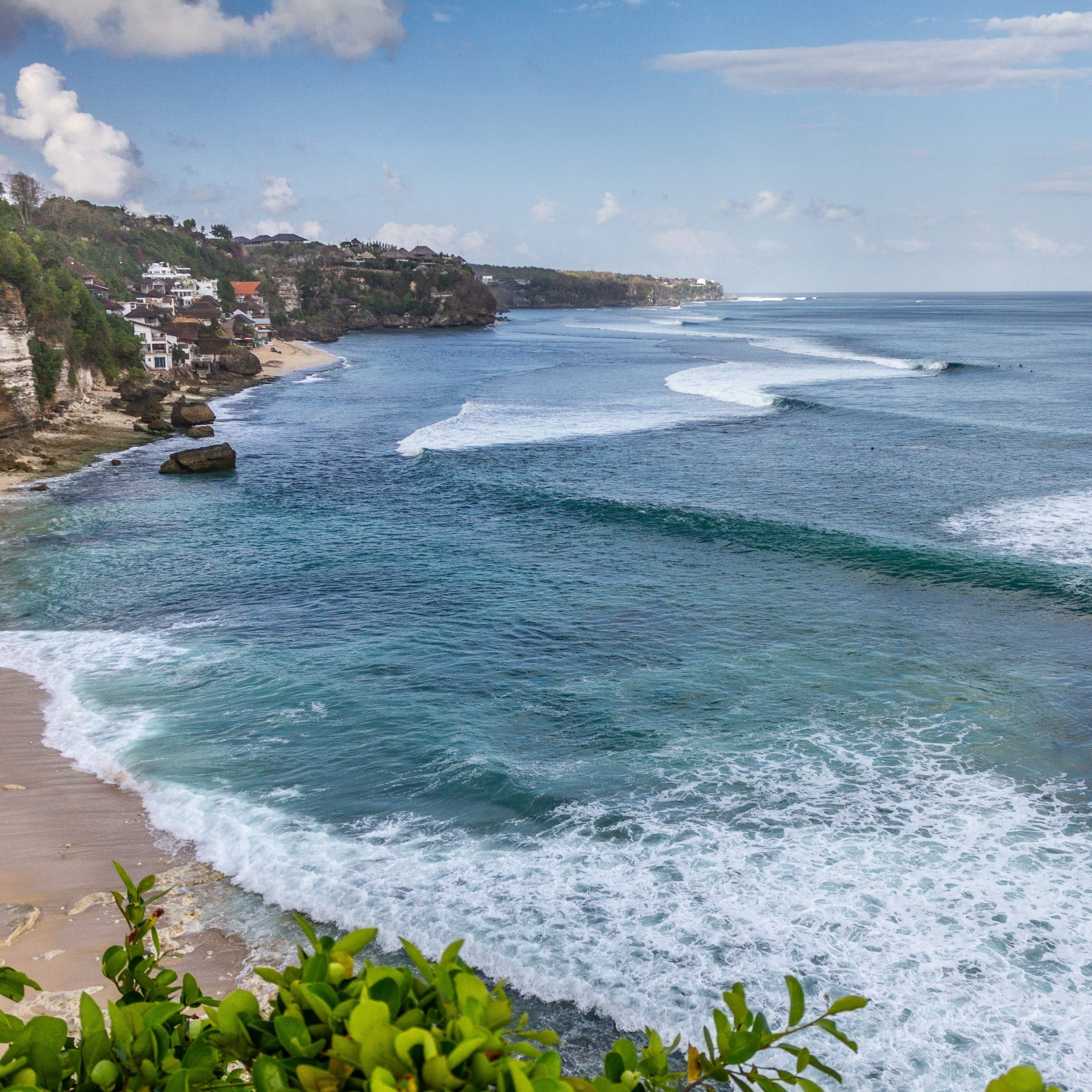
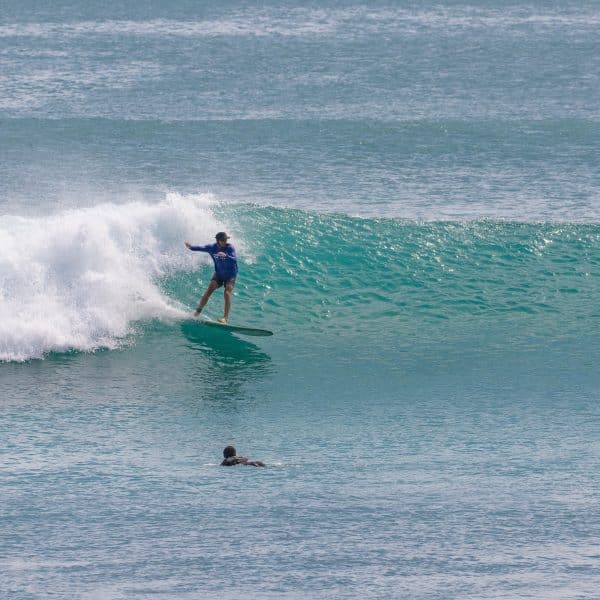
Dreamland
Dreamland is a beautiful white sand beach with many different breaks that work at different stages of the tide and is suitable for novice surfers as it breaks over sand. The best wave is an A-frame peak that works best at low tide on a big swell, suitable for advanced surfers. There is also a punchy shore break wave where you will see Balinese and visiting surfers exhibiting their skills at the water’s edge. On small days Dreamland is suitable for beginner surfers, but it is a particular favourite of intermediate surfers as there are a variety of spots that work on different tides and swell sizes.

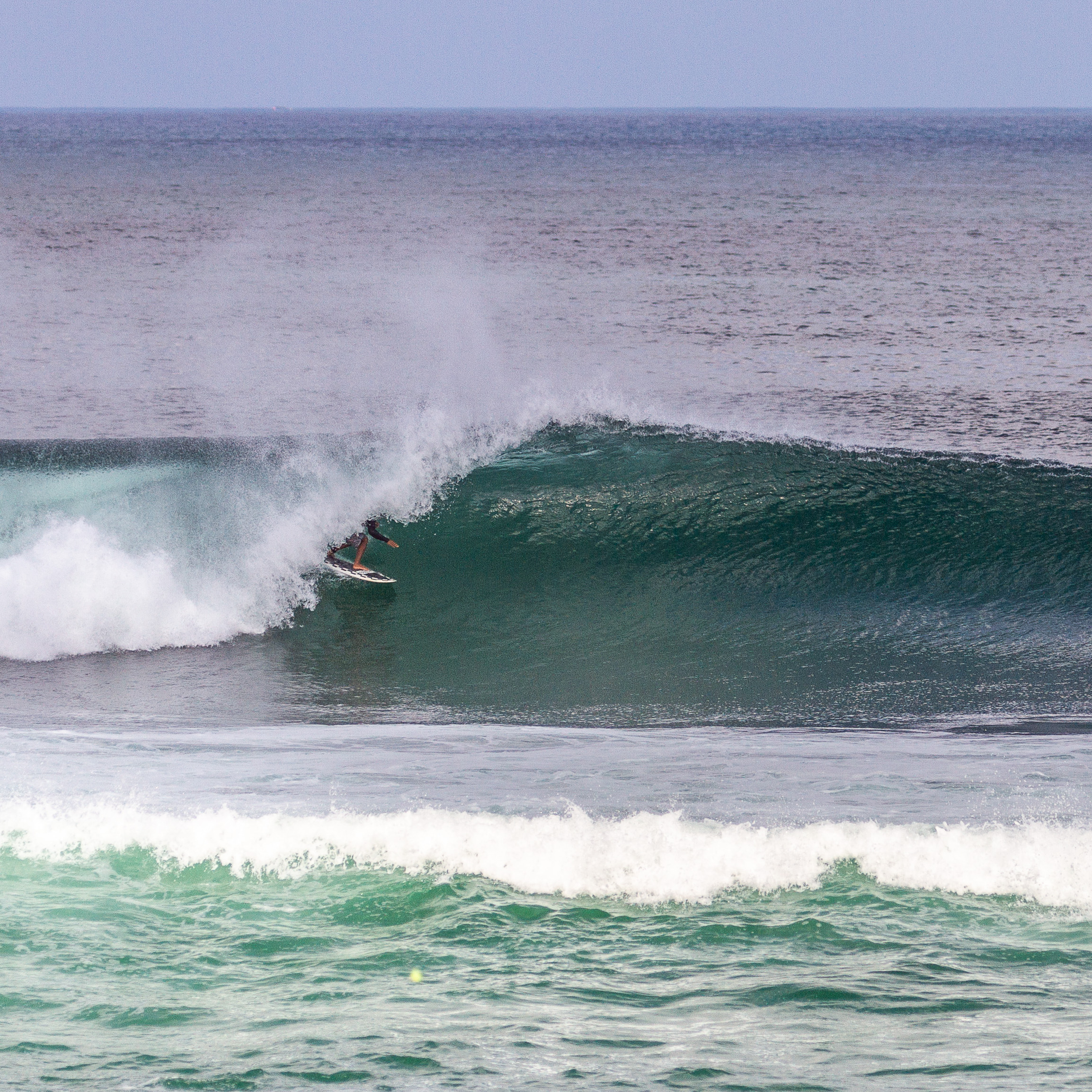
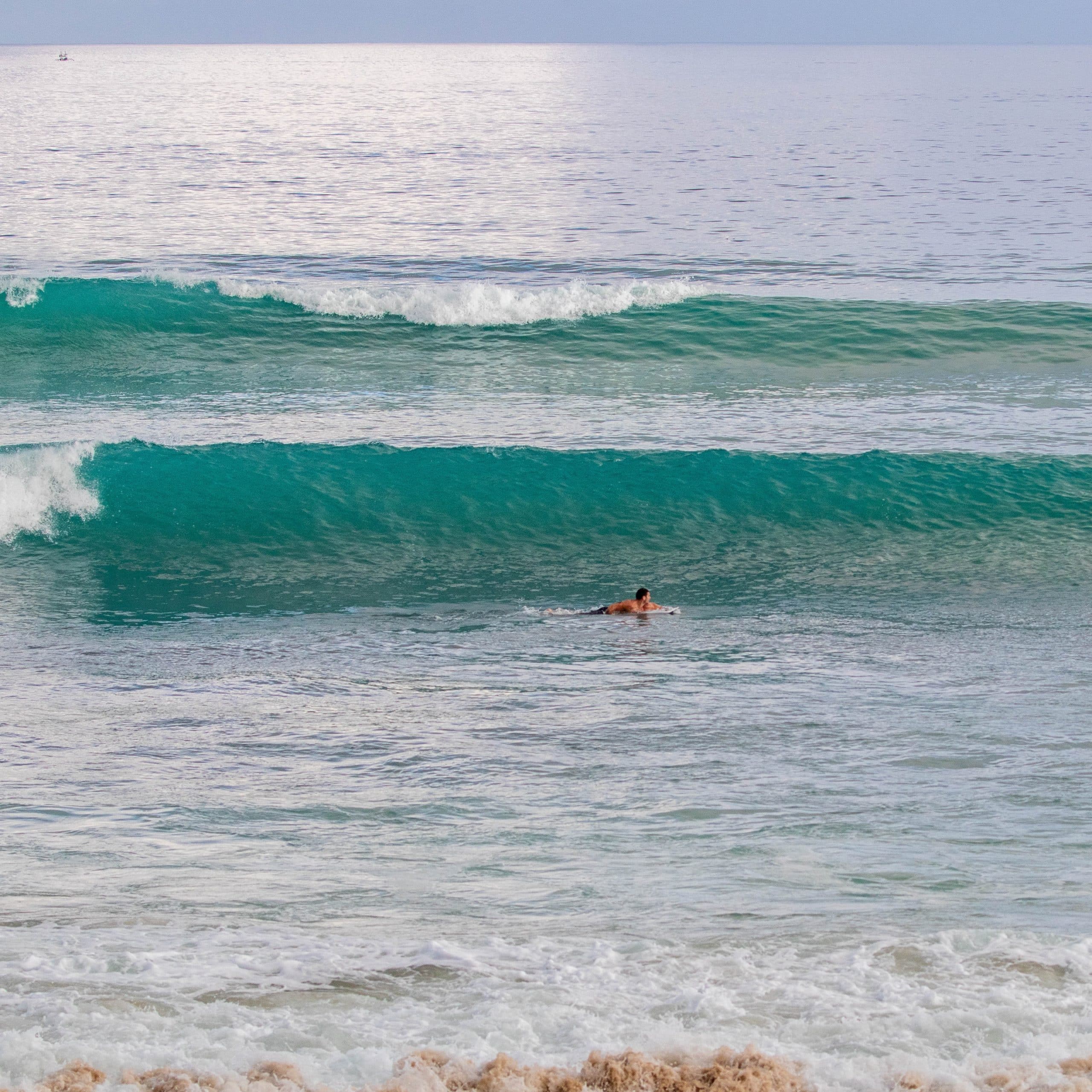
Balangan
Balangan is the next break on the Bukit and is walking distance from Dreamland. It is a reef break but has a beautiful white sand beach which is very quiet and protected. Balangan is still relatively undeveloped and retains that old Bali charm. Balangan is a fun left-hander that can break quite fast so wave selection and positioning are key here. Very popular with intermediate surfers but also suitable for beginner surfers on the smaller days. Balangan can be ridden at any tide, but low tide is a bit challenging for novices, so it is usually best on mid to high tide.
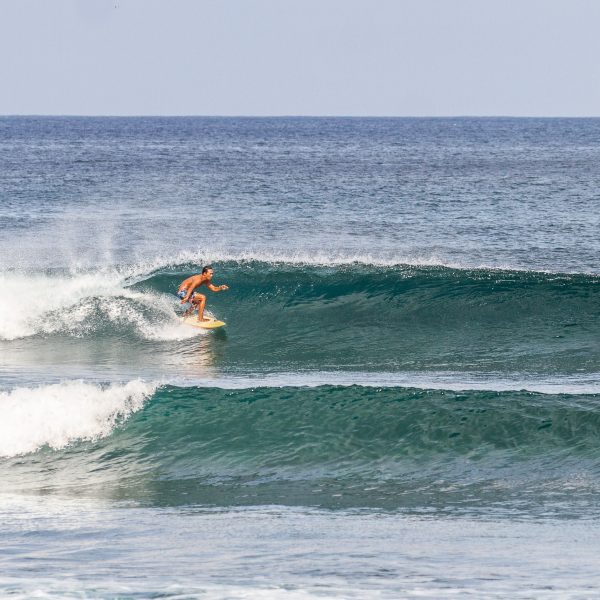
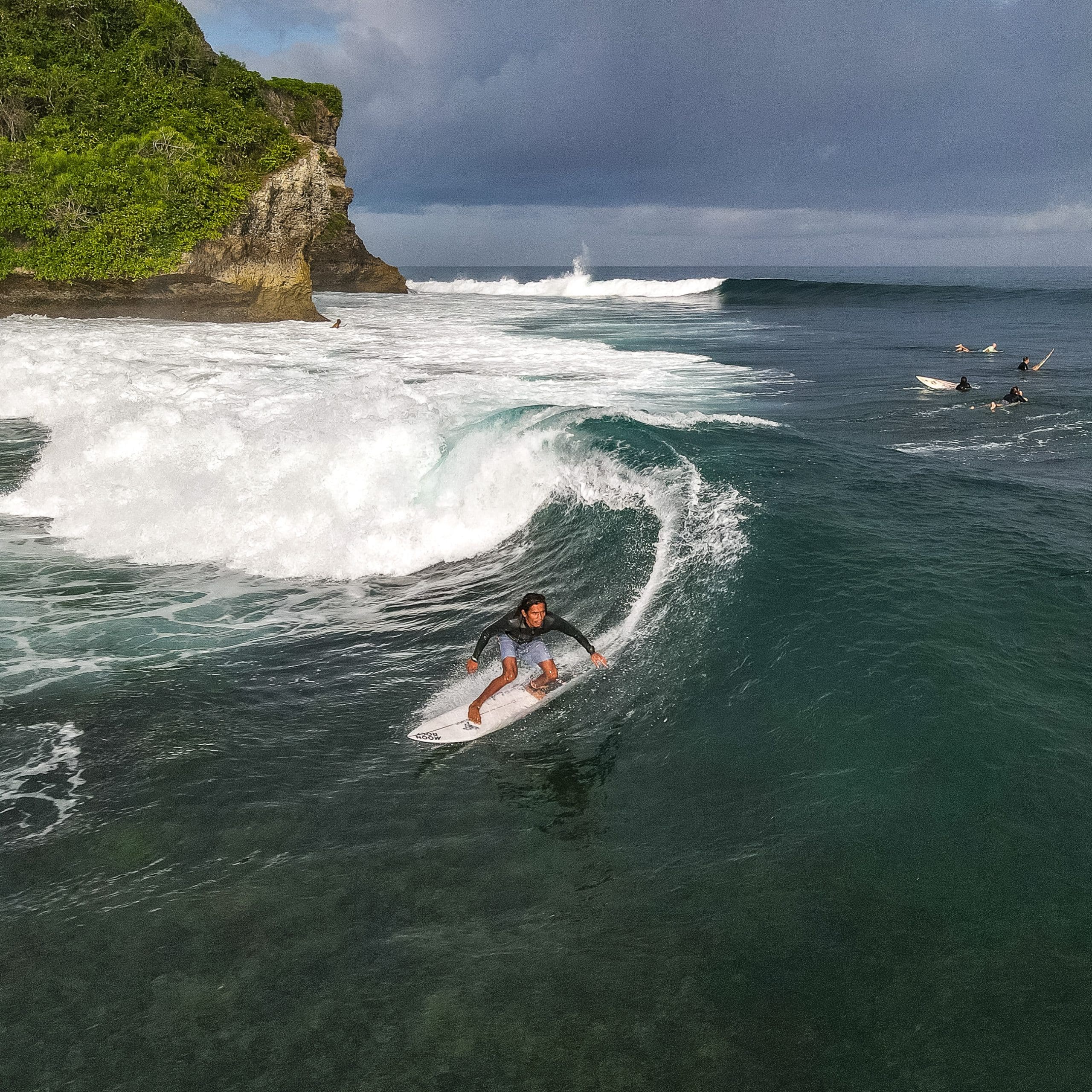
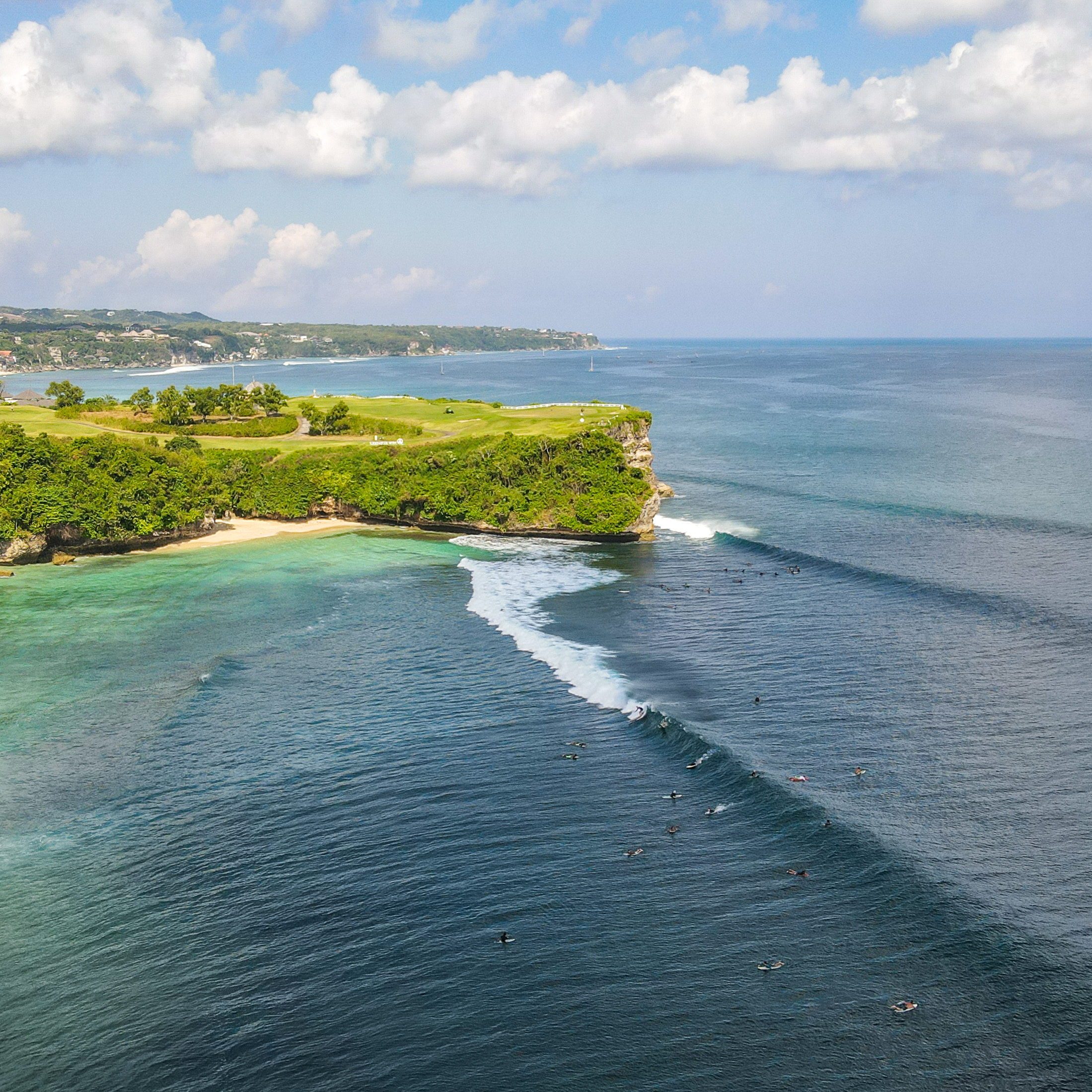

Jimbaran to Seminyak
This beautiful stretch of coastline either side of the airport is very popular with non surfer tourists due to the easy access to white sand beaches, and tourist infrastrucure such as hotels, restaurants, shopping, cinemas etc.

Honey Moon
This hard-to-find break, also known as Jump Offs, is a great option for intermediates on a large swell. This break offers a tricky take-off as the wave breaks very close to the cliff while the current is running against you as you paddle for the wave. Once the take-off is completed, you are rewarded with several cutback sections and up to 100 meter + rides on a good day. This spot is known for surfers jumping off the rock into the lineup, but just make sure you time it right. Don’t do it at dead low tide is our recommendation, and make sure your leash doesn’t get snagged on a rock.
Jimbaran
Jimbaran is a good spot for learners on the right swell conditions. A sheltered bay with soft sand, the waves break softly and can be the perfect spot for your first ever surf as unlike many other breaks in Bali, it is just a short paddle to the line-up. On big swells, Jimbaran Beach is perfect for beginner surfers.
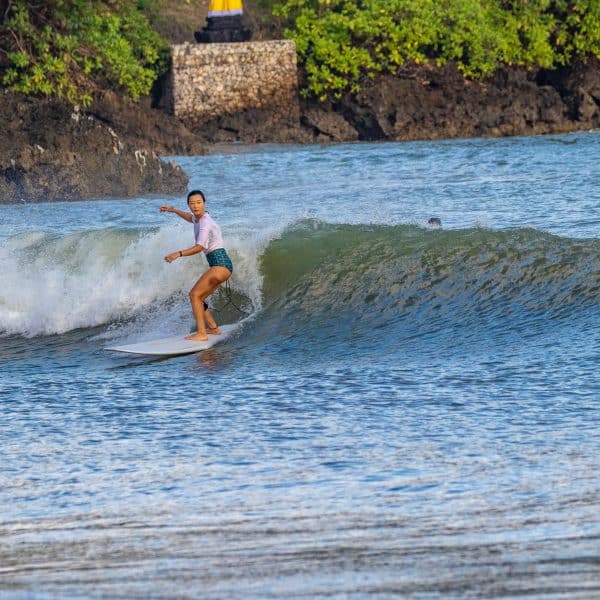
Kuta Beach
Kuta boasts several main beach break peaks, including Halfway and Double 6, which rely on ever-shifting sand formations and a mid to high tide to truly shine. These breaks are at their best between March and December when the trade wind blows offshore. On days with smaller swells, Kuta provides an excellent opportunity for beginner surfers. With a sandy bottom and slow-rolling waves. It’s a haven for longboarders as well. As the swell picks up, various peaks in Kuta produce enjoyable, peeling lefts and rights.
Legian
Legian works on same wind and seasons as Kuta, but picks up a bit more swell as less exposed to the Bukit shadow. Padma peak, located directly in front of Padma hotel is the best spot on this stretch of coastline. Lefts and rights this is a great wave. One of the best beach breaks in the world.
Seminyak
Seminyak has a long stretch of coastline but the wave quality is average at best. Ku De Ta is often the best spot to surf in this area. It is never excellent but worth a paddle out for before sunset cocktails and dinner.
Airport Reefs breaks
The Airport Reefs are located near to the end of the runway of Bali’s Ngurah Rai International Airport, on both the Kuta side and in Jimbaran Bay. Here you’ll find five world-class outer reefs ranging from surf-movie perfect to intermediate-friendly. As an added bonus, there are both left and right-breaking waves, offering something for everyone. You can easily access these waves via a fun traditional boat ride from either side of the airport.
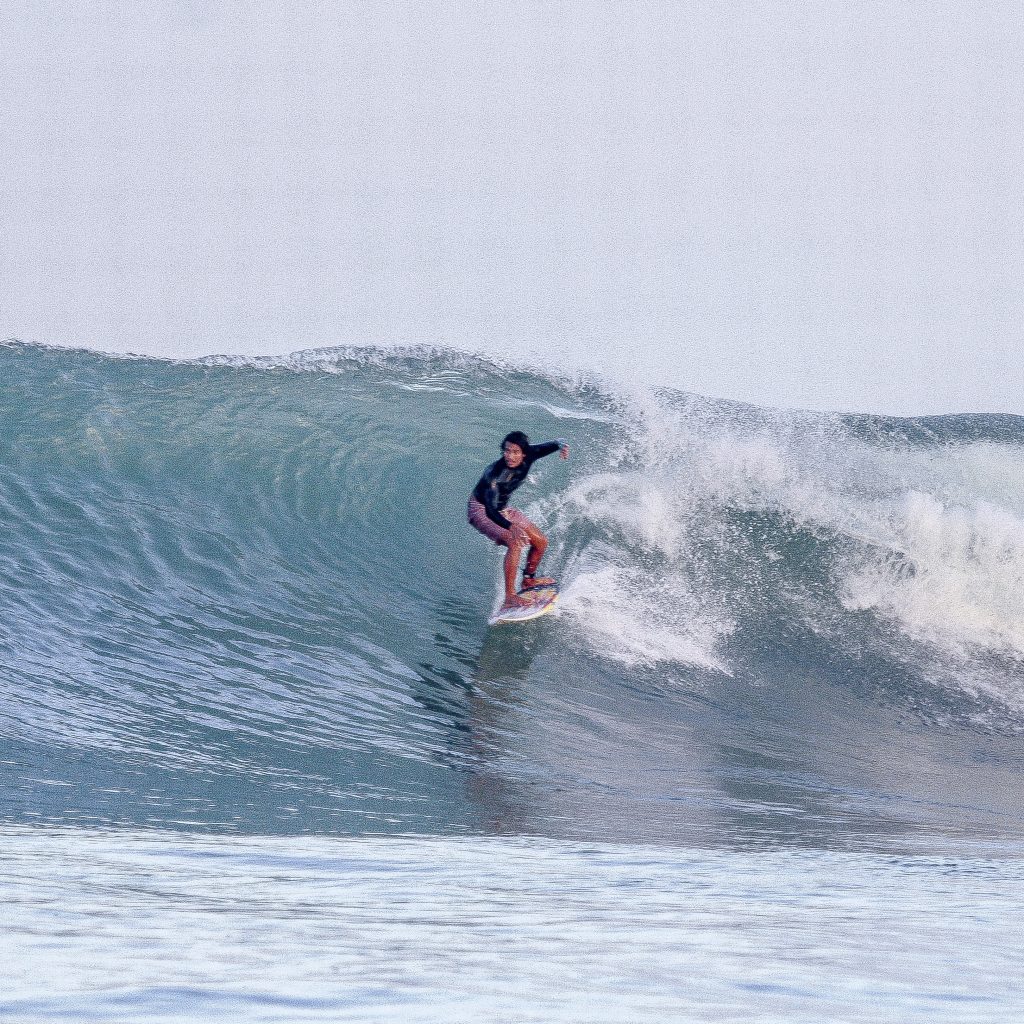
Airport Right
Airport rights breaks very near the runway on the Jimbaran side. It picks up less swell than airport lefts but is a better quality wave. In fact, it is one of the best right-handers in Bali, and one of the few waves that break right on the west coast. With a very fast, sucky take-off, the wave walls up, and while many waves are too fast, if you pick the right one the ride is about 300 meters ending in a bowly barrelling shallow end section. On smaller days, the wave is suitable for intermediate surfers, but when in the overhead class it is for advanced surfers only.
Toro-Toro
Toro-Toro is a surf camp favourite. A highlight of a stay with Padang Padang Surf Camp is to take the fun boat to Toro Toro. This is a very easy wave, and the right can peel for an incredibly long distance. At high tide, there is a left-hander that can be fun but is a short ride breaking into a deep water channel. Toro-Toro is an easy wave and perfect for intermediate surfers. When the swell gets bigger, the inside section can be fun, and for beginner surfers, the tower can be perfect.
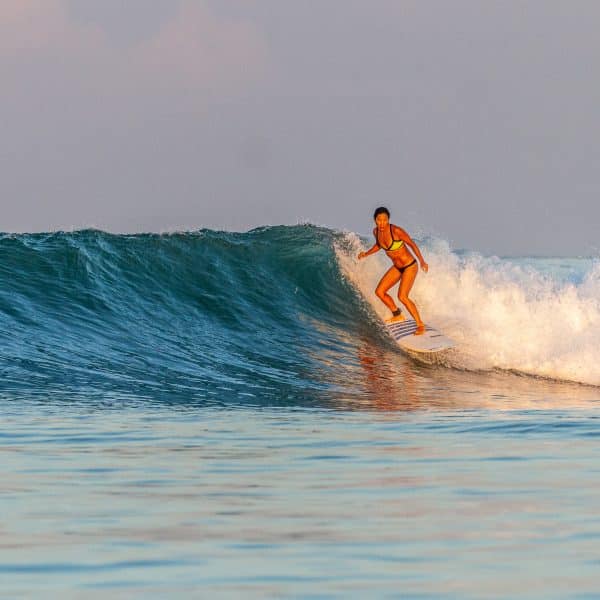
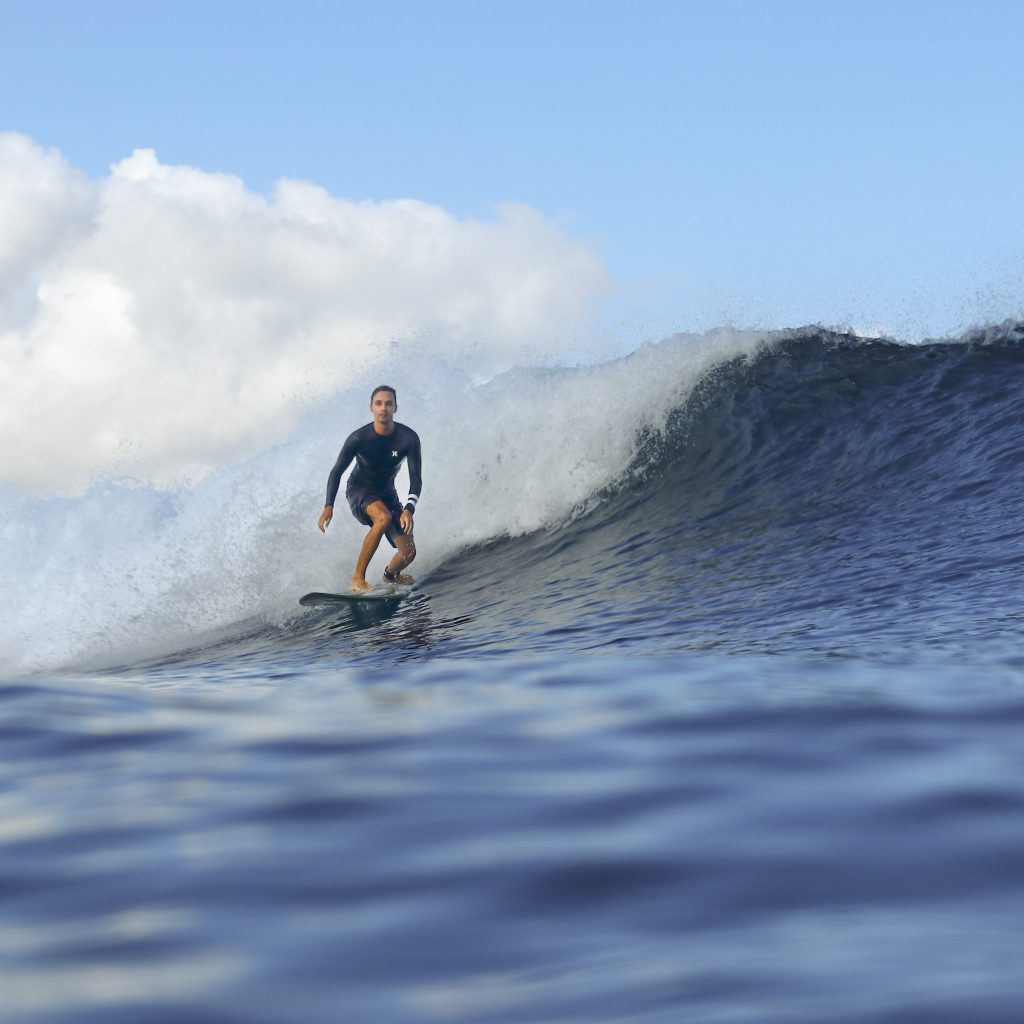
Airport Left
Airport left is a shifty left-hander located very close to the airport runway and easily accessible from Tuban and Kuta. It’s fun to surf on a small to medium-sized swell but is hard work on a big swell as the current constantly pulls you out of position. Due to the proximity to the airport runway, the wave can hold a medium-strength wind without getting too choppy or blown out, unlike the other airport reefs.
Middle Reef
Middle Reef, between Airport Lefts and Kuta Reef, is a low tide break that picks up the most swell of all the Airport Reefs. It will still break well at mid-tide on bigger days. Middle Reef is a high-quality wave, and it’s popular with expat surfers. On a dead low tide, the paddle from the beach is not very far so you can avoid the expense of taking a boat.
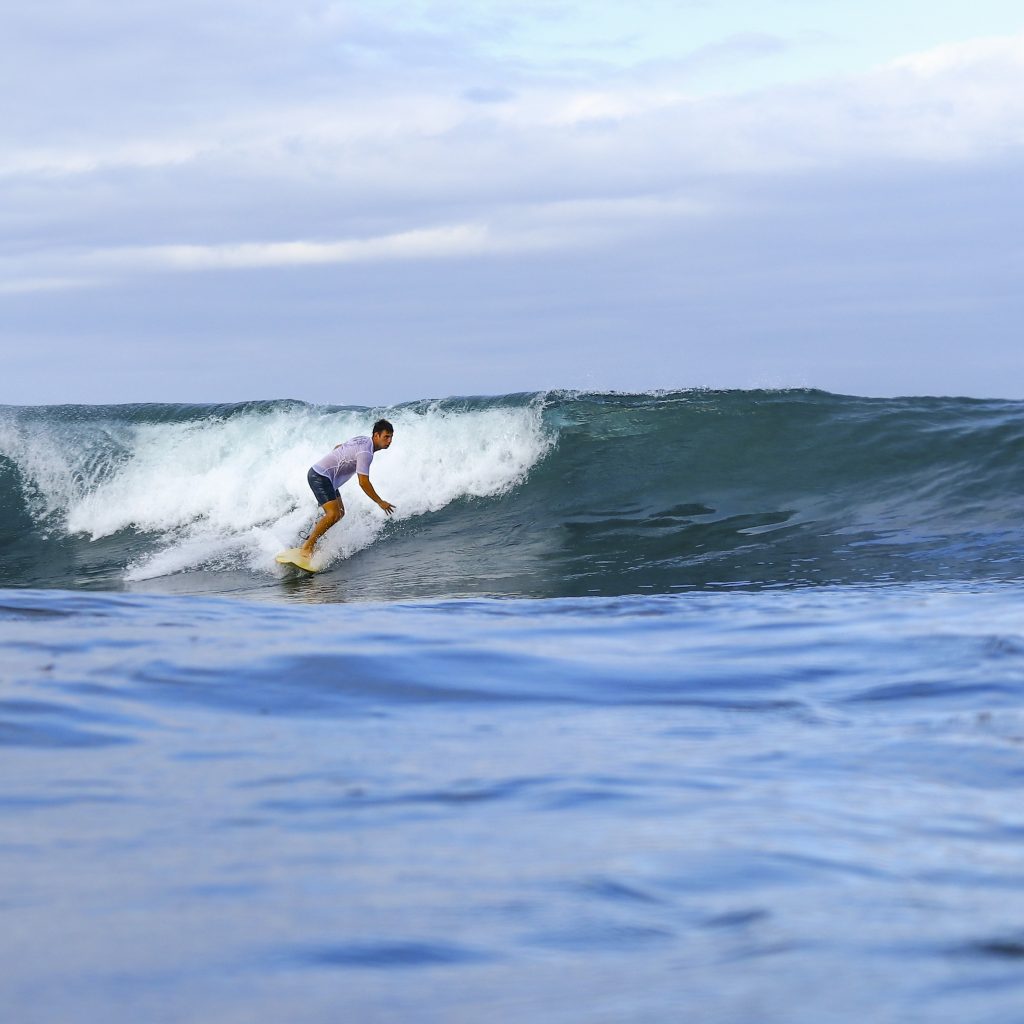
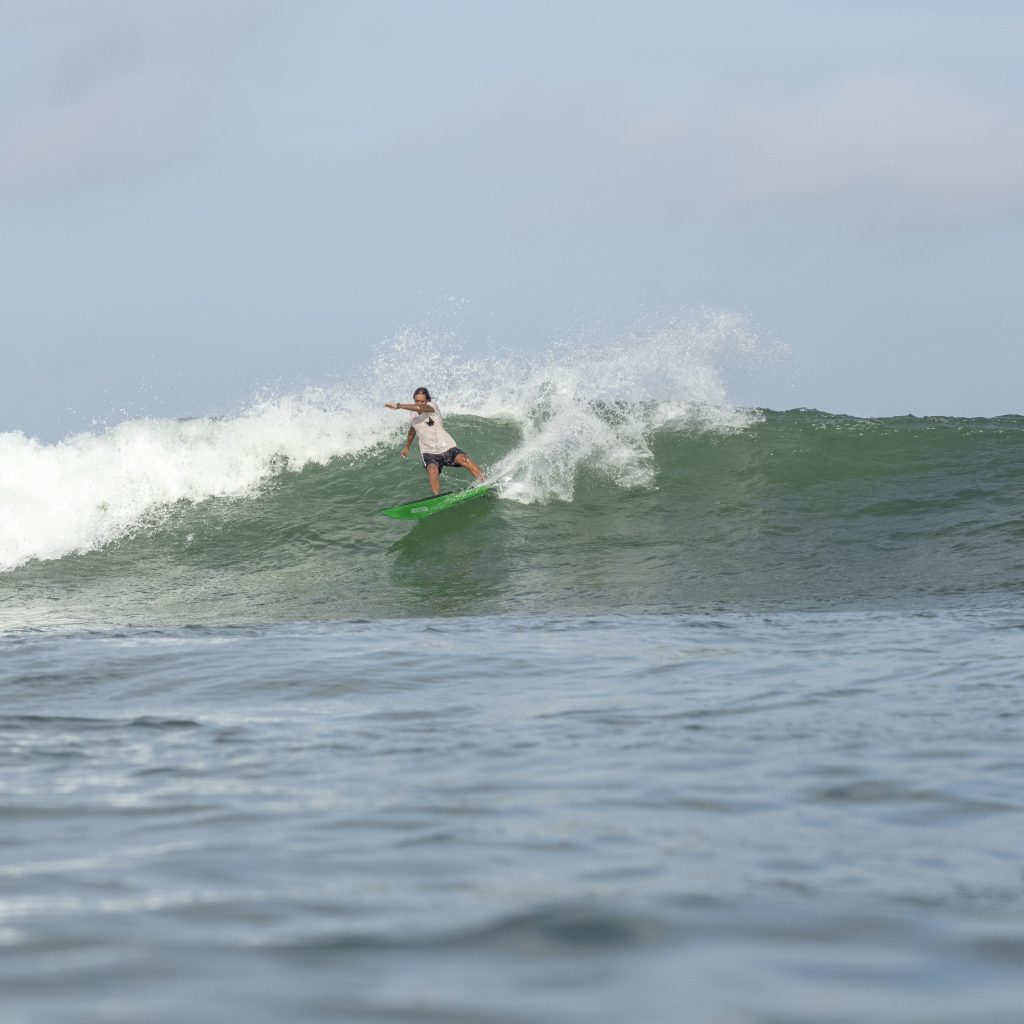
Kuta Reef
Kuta Reef picks up less swell compared to the other two reefs located on the Kuta side of the airport. Kuta Reef is the highest quality wave due to its predictive nature and length of ride. It’s best surfed at mid-tide and throws the occasional soft barrel. Kuta Reef is a perfect wave. But this means it can get very crowded with local surfers and tourists all searching for that easy barrel and long ride.
Canggu
The centre of Bali tourism has moved from Kuta-Seminyak to Canggu. It is popular with expats because of the proximity to international schools. Digital nomads love it as it has great co-working facilities and easy access to the beached. Digital nomads are put off Uluwatu area as they don’t have the time in their busy schedule to walk down cliffs to access the surf. Party goers love it as there are so many bars and clubs and a party to go to every night. The downside is the traffic and crowds but the surf remains as good as it ever was.
Berawa
Berawa Is a great wave for intermediate surfers as the wave is steep enough to ride smaller boards yet breaks at a much slower speed than the advanced waves in Canggu. The several peaks that make up Berawa, and it is less crowded and less competitive compared to the other spots in Canggu.
Batu Bolong
Batu Bong and Old Mans are the best beginner surfers and longboard waves in Canggu. Here you will find long waves rolling in at a snail’s pace. The line-up is usually packed with anyone from sunburnt tourists to hipsters attempting to nose-ride on huge longboards.
Echo beach Left
Echo Beach is a powerful left-hand wave that breaks over a shallow reef and into a deep channel. Jump in between the Sandbar ad the left and ride the current to the lineup. It’s known for barrelling sections and is suitable for intermediate surfers when small and experienced surfers on big days. It breaks directly in front of some great cafes, so you will always have an audience. This wave is best on a mid to high tide.
The Sandbar
The Sandbar is an A-Frame wave that breaks both left and right on a mid to high tide. It’s an advanced-level wave with a shifting peak and a pitching lip. The left-hand breaking wave barrels on the take-off with enough swell. It offers steep, high-performance walls for surfers to carve manoeuvres and push their limits. You can find your way into sand-bottomed barrels if your positioning is correct.
Rivermouth
Canggu’s River Mouth is regarded as the standout surf spot in the area. It offers a hollow right-hand wave that breaks with barreling sections. The wave typically breaks best during high tide when the water fills in over the volcanic rock shelf. At low tide, the water becomes too shallow and the wave breaks too fast to ride. It is shallow and dangerous at low tide. River Mouth can hold a wave size of up to about 1.5x overhead. But if the swell size is much bigger than this, then the wave tends to close out. This renowned spot often attracts top local surfers and visiting pros. For example, Rob Machado made it his home here for a few years.
South Bukit
Breath taking natural beauty, this area still retains the charm of old Bali before mass tourism. Soaring cliffs, a huge choice of surf breaks, low population density, white sand beaches. We are only naming the known surf spots, some of which like Pandawa and Gunung Payung were until quite recently secret spots. There are secret spots still undiscovered by the masses – seek and you shall find.
NYANG NYANG
Nyang Nyang works best on a high tide and small swell. Like the other south coast breaks, it does not handle the trade winds, or wet season winds. Usually best in the morning or early/late season when the winds are light. The wave offers shifty, punchy walls, making it an excellent small swell location.
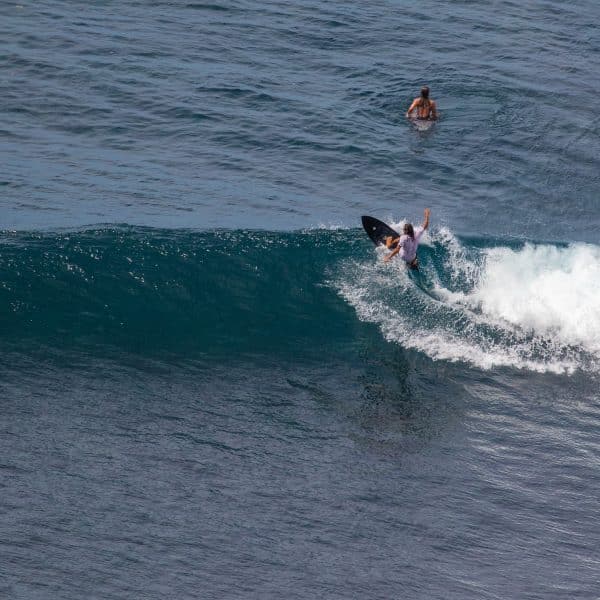
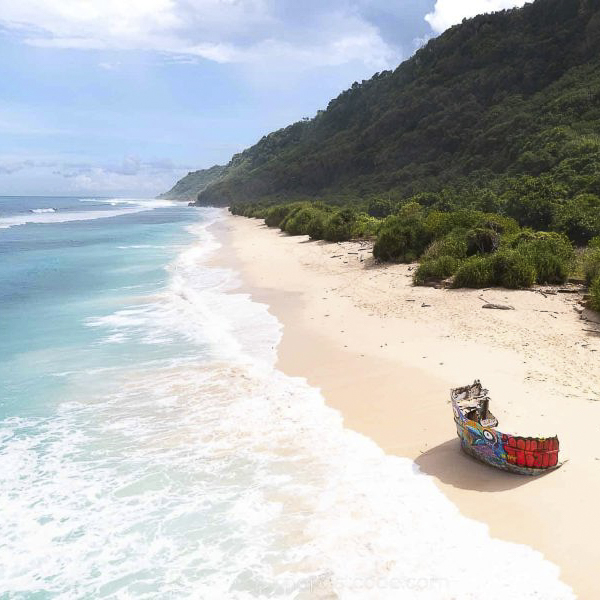
Nungallan
Want to escape the crowds and surf at a beautiful secluded place? Nungallan could be just what you are looking for but it’s a long way down, and an even further trip back to the top. This is a quality left hander that picks up a lot of swell and breaks hard. If Uluwatu is 2 foot then better take a step up board to surf Nungallan. During the dry season it is often too big and too windy. Needs light winds and an even lighter swell.
Gunung Payung
A little known fact is that Gunung Payung picks up the most swell in Bali. If it’s too small here, then it’s flat everywhere else. A shifty right hander with a strong current, it’s not one of Bali’s finest surf spots, but worth checking out on a tiny day. It is walking distance from Pandawa and always a little bit bigger and less crowed.

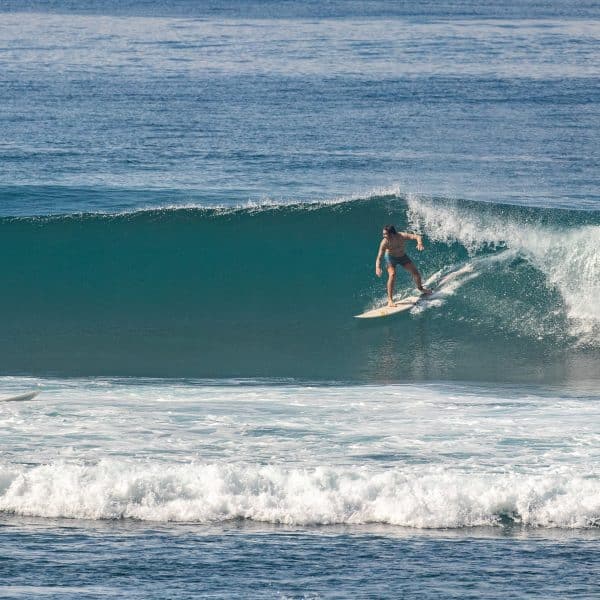
Greenbowls
Greenbowls, also sometimes called Greenballs, picks up any swell direction but is very exposed to the trade winds. You must pick your time carefully to go here when it’s not too big and not blown out. It breaks mostly right into a channel but also can pick up a few lefts. Beware of the strong sweeping current, and make sure you save some energy for the huge climb back to the top. Popular with intermediate surfers, Greenbowls picks up a lot of swell and on the bigger days is only suitable for advanced surfers.
Pandawa
Pandawa, once a secret spot called Timbers, is now a popular sightseeing destination for Indonesian tourists. Mostly lefts breaking into a channel; on big days, it can be compared to Teahupoo, hence the name timbers. The rights are fickle but can be fun if you don’t mind the brutal paddle back to the lineup against the current without any channel. Due to the strong current, it is usually only suitable for advanced surfers.
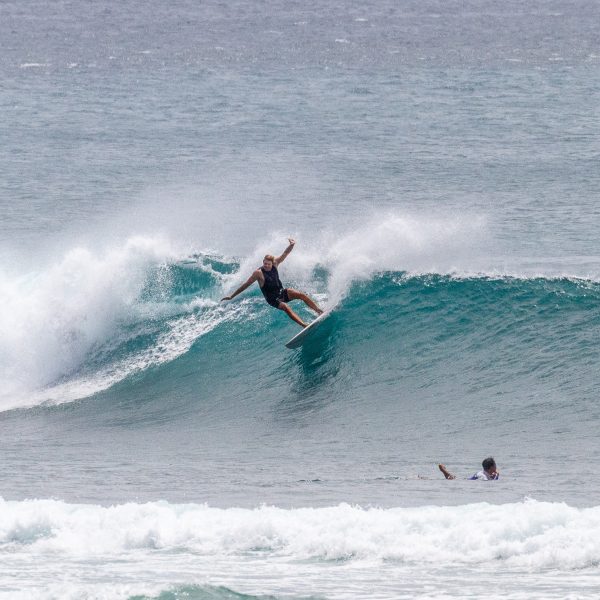
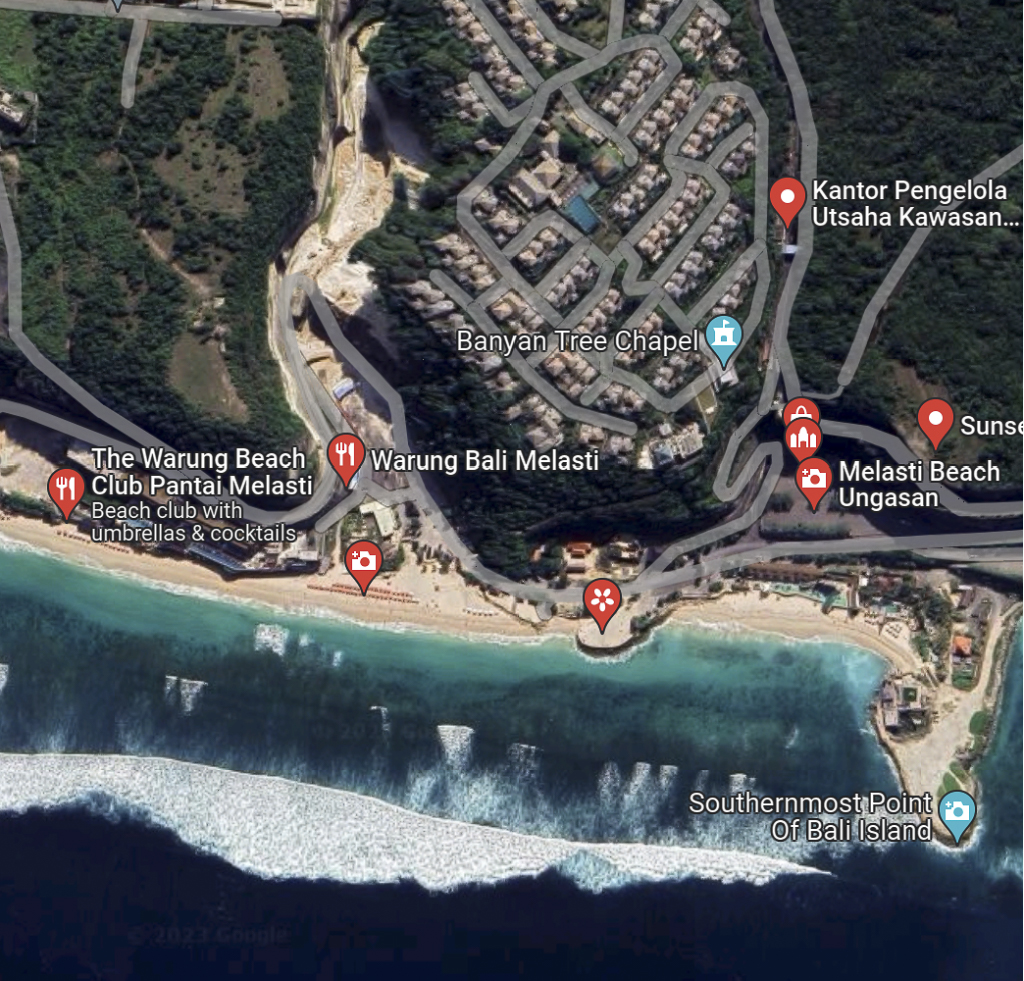
Melasti
Melasti is a good option if there is a small swell and you are tired of the crowds, as hardly anyone surfs here. There are 2 breaks – one suitable for intermediate and advanced surfers and one for beginners. Access to both breaks is very easy with the new road that takes you all the way to the beach. The more advanced wave is located to the west of the helipad and has a strong current. The beginner wave is to the east of the helipad and is more sheltered so less current.
Nusa Dua
Nusa Dua shoreline is lined from north to south with international 5* chain hotels. It is the leading conference centre in Asia Pacific and hosts international events such as G20 due to it’s facilities and location. Golf courses, white sand beaches and a choice of quality surf spots make this the go to location for the surf camp in the rainy season. Check out our complete guide to surfing Nusa Dua.
Geger Left
Geger Left picks up less swell than Geger Right but is shifty but can offer great rides. Easy paddle out to the lineup if you know what you are doing but it can be hard work to get back in on a higher tide. At high tide, there is no beach, just waves breaking against rocks, so be careful, as even experienced surfers can get smashed.
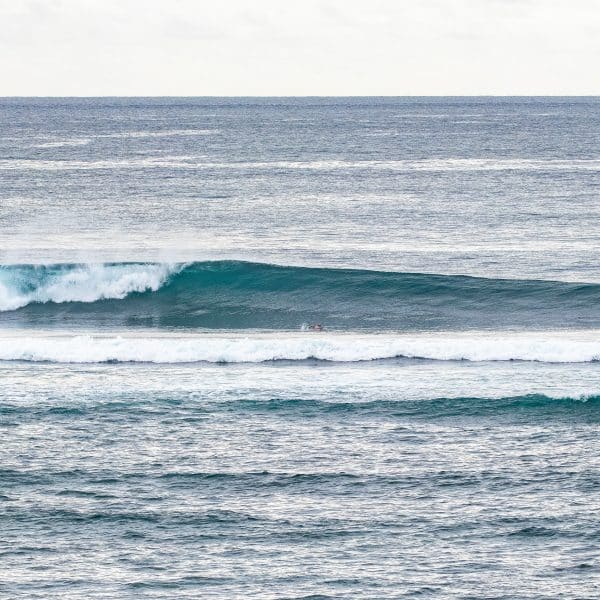
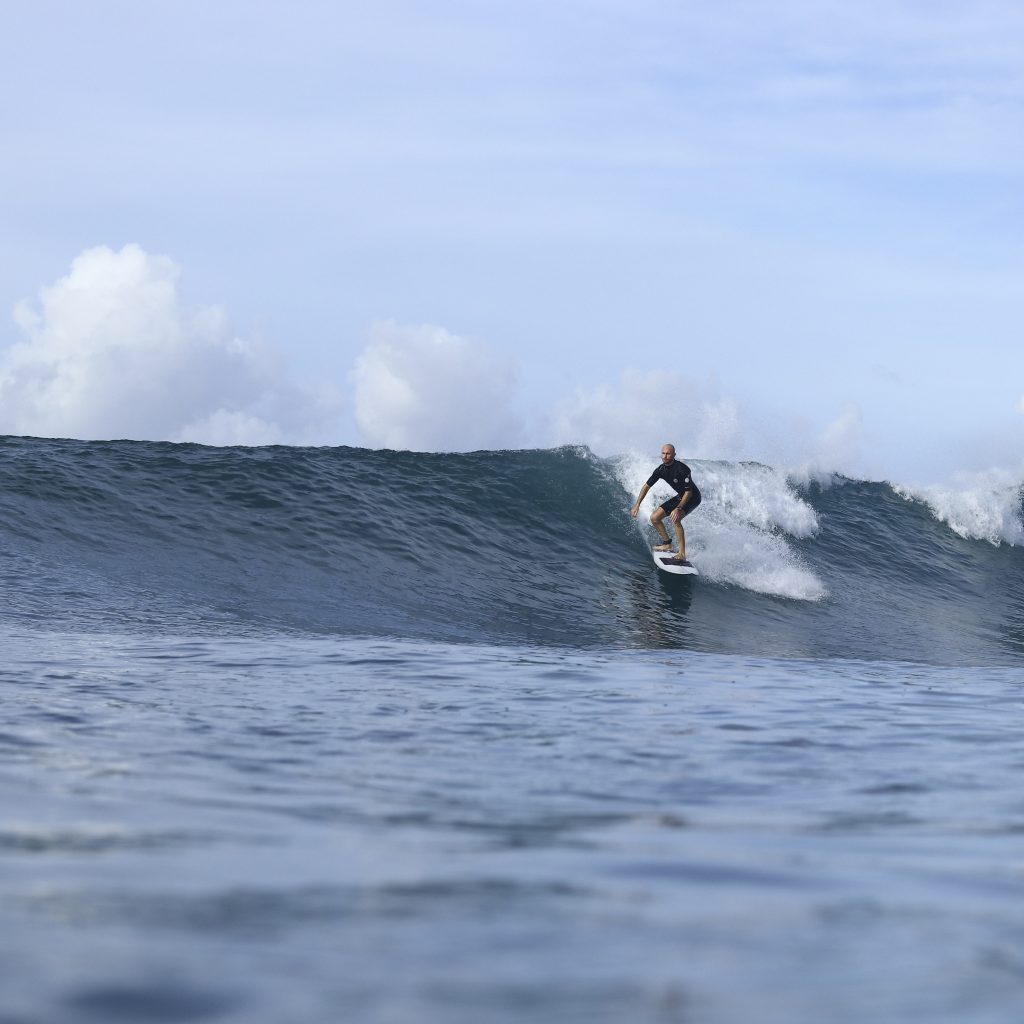
Geger Right
Geger right picks up the most swell on the east coast of Bali due to the location in the far south of the island and deep water offshore. It is a fast right-hander best at high tide but has a strong current running the same direction as the wave, so it’s a hard paddle back to the line-up. On bigger days, it is a constant paddle to keep in position. Strong paddlers only, scary on bigger days. Tiger sharks also occasionally frequent the line-up. Best to take a boat to the spot due to the distance offshore and the current.
Chicken Wings
Chicken Wings is a fun right-hander located at the end of Geger Rights. Best to take the boat from Mengiat, or you can paddle from the beach if you are a good paddler. The wave offers several peaks, and a good wave can connect all the way into deep water several hundred yards down the line.
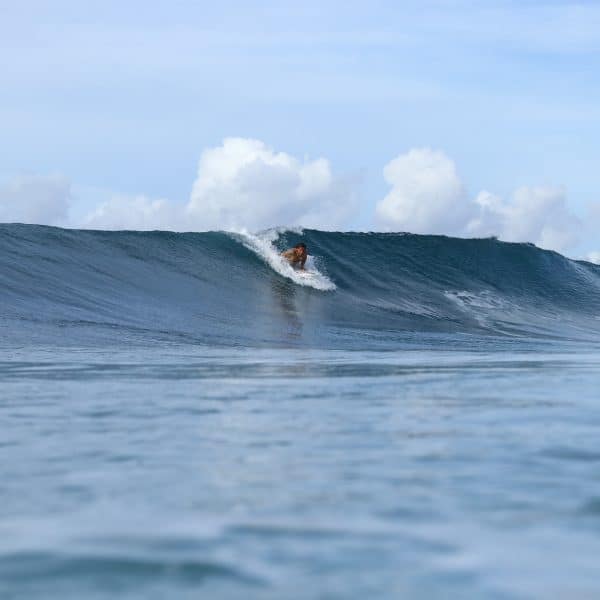
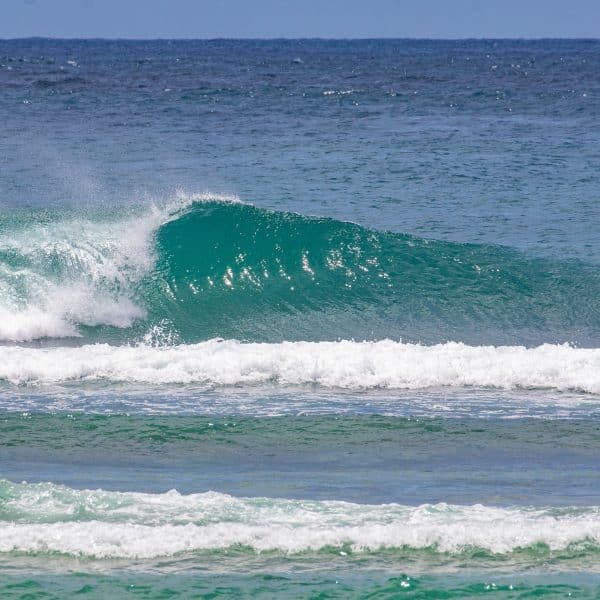
Black Stone
Black Stone is a fun wave that jacks up quickly out of deep water and mostly breaks left. The bounce from the rock forms a peaky wedge that can be tricky to take off on and offers a fast zippy ride that is more suitable for advanced surfers. There is also a shifty right-hander that breaks into deep water, which on the day can be good. A little bit further from the rock the wave is more mellow and suitable for intermediates and beginner surf lessons on smaller days. Breaks best at mid tide.
Mushroom Rock
Mushroom Rock is a fast right hander that barrels on bigger swells and only suitable for advanced surfers. On a small swell it is suitable for intermediates at high tide. It is not suitable for beginner surfers as breaks quite far from the shore. For goofy footers most waves are usually too fast.

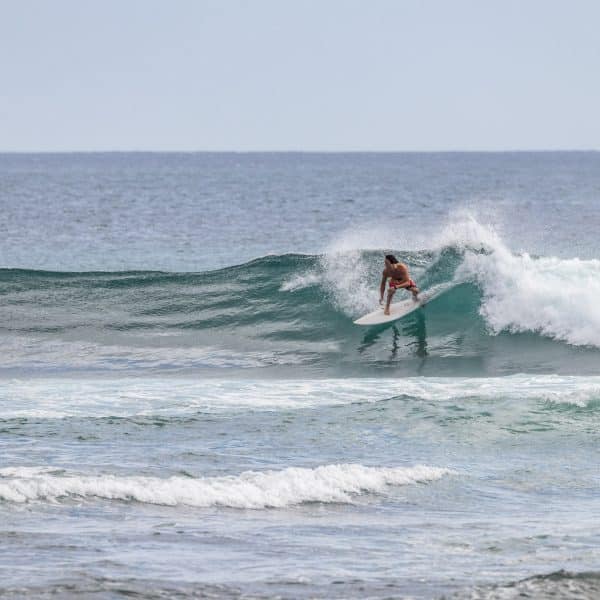
Sri Lanka
Sri Lanka is also considered by some to be the best right in Bali. On a big swell, it throws below-sea-level barrels. On mid-sized swell and a high tide, it offers fun and fast walls for intermediate and advanced surfers. You can paddle out from the manicured shores of the nearby 5-star resorts.
Mushroom Secrets
Mushroom Secrets is a protected reef break that is a great spot for all levels of surfers on a big swell. Advanced surfers can take off near the headland and enjoy the steep walls. Intermediate and beginner surfers can surf the inside reform wave, which is protected from big sets and the current.
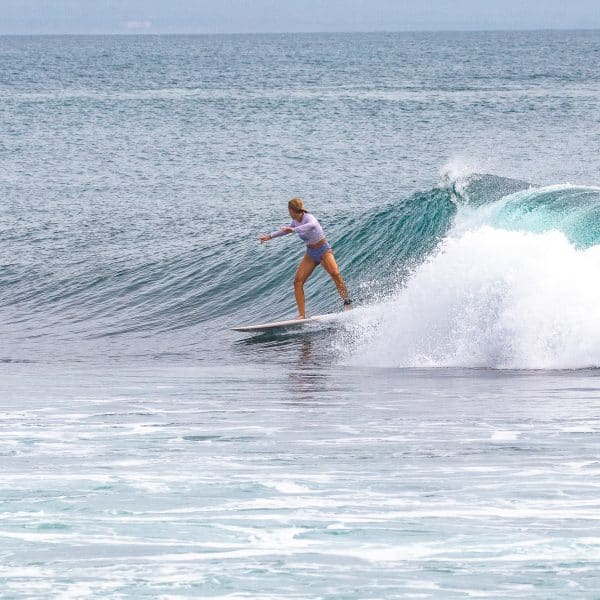
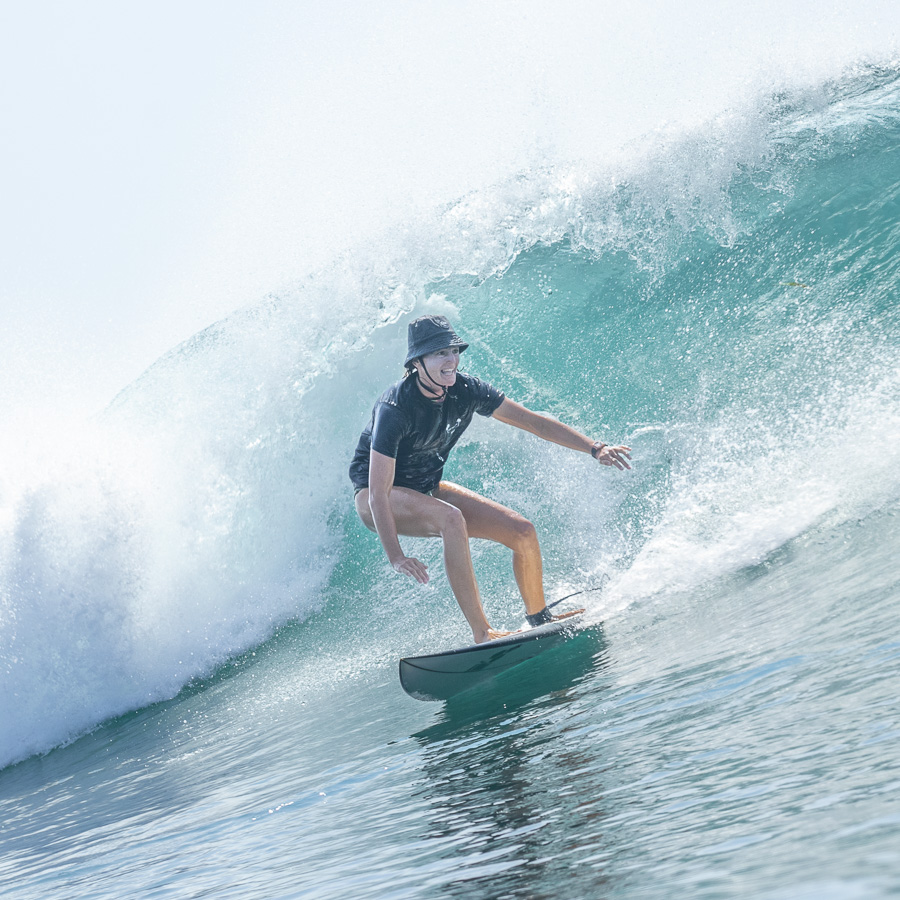
Benoa
Benoa picks up less swell than the Nusa dua breaks further south, but when it’s on it’s on here. There are 3 separate breaks all quite close to where they offer tourist water sports activities. Benoa outside left is a quality peak that picks up the most swell and on bigger days packs a punch. Benoa left inside is always smaller and softer. Benoa rights is a high quality barrelling wave that is located the other side of the channel and can lock you in for the ride of a lifetime.
Serangan
Serangan has deep water offshore and picks up a lot of swell. It is a wide breach with many peaks. It is quite close the Kuta and the closest surf break on the east coast to Canggu. It used to be very crowded as the go to spot in the rainy season, but there is now no road access so you need to take a boat. More difficult to access means less crowded but same quality waves.
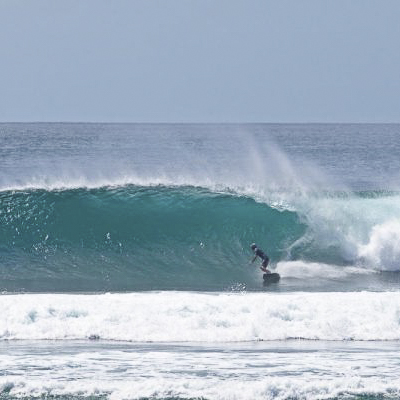
Sanur
Sanur used to be a tourist hotspot. It is now eclipsed by more fashionable areas such as Seminyak and Canggu. It is popular with older expats and has a great choice of beaches to hang out or surf.
Baby Reef
Baby Reef is a protected beginner wave popular with surf schools and longboarders. This wave is best on a small swell and a mid to high tide when the wave offers several slow left and right peaks. The wave breaks nicely up to around head high, any larger and the wave becomes unorganized and closed out. Grab a boat from Panntai Mertasari for the 700 meter ride to the surf break.
Hyatt Reef
Hyatt Reef is an exposed right-hand reef break that breaks hard and fast on a big swell nearly 2 kms from shore. The wave is made up of several sections, which can all line up on the right swell (or when big enough). This wave requires a high tide as the wave breaks in very shallow water. This is an exposed break that will quickly blow out when the wind shifts directions. Be mindful of the strong current due to proximity to the deep water of the Lombok Straight.
Tanjung Lefts
Tanjung Lefts turns into a short and intense left-hand barrel for skilled and experienced surfers when overhead. This heavy wave is best surfed on a high tide, however, it can also be surfed on a low tide when big enough. This spot is not crowded given its dangerous nature. The wind needs to be light offshore for this spot to really shine. Similar to Tanjung Rights, on a high tide and a small swell, the wave offers intermediate-friendly rides.
Tanjung Rights
Tanjung Rights is a fast right-hand reef break that provides an excellent wave when on a large swell and high tide. This wave gets heavy on a solid swell. On high tide and a medium or small swell, it becomes intermediate-friendly with turn sections and a slower pace. Low tide is dangerous and for top surfers only. Due to the quality of the wave, it gets crowded when the conditions are right. The wave breaks close enough to paddle from the shore.
Magic Wave
Magic Wave is a perfect left tube which is famous for its intense top-to-bottom barrels. This wave needs a solid swell to turn on; otherwise, it just appears as a closeout on the reef. This wave can be surfed at high or low tide, but it is very shallow and is known to break boards. The wave is near to shore and you can paddle out from near Pantai Sindhu. This wave is a perfect left barrel in an area full of rights.
Sanur Reef
Sanur Reef is famous for being a perfect, fast, and hollow barrel for experts only on large swells. It only breaks perfectly on large swells, which do not occur regularly during the wet season. This wave is very shallow and dangerous when breaking properly. The tidal window for it to be perfect is small. Tide too low and it is too shallow, then it quickly fattens out when the tide is too high. When smaller and on a high tide, the wave is good for intermediates as it offers long walls good for turning. Be mindful surfing here as heavy locals have claimed this wave.
East coast
There are so many breaks on the east coast, the exact number is not known. In keeping with good surfing journallistic practices, we will only review the known spots. People who say there are no secret spots remaining in Bali, have never explored this coastline.
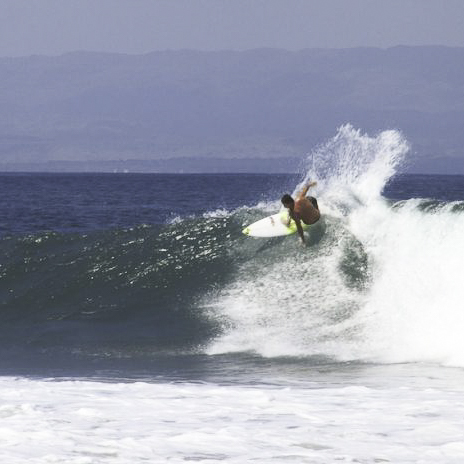
Ketewel
Ketewel was the go to spot on the east coast before the road to Keramas was built, but has now been eclipsed by it’s more famous northern neighbour. It’s a fast and powerful black sand beach that breaks close to the shore. If you are lucky you will get to surf it to yourself.
KFC’s
Keramas fried chicken is an average wave that is not worth a big trip for, but if you are tired dealing with the Keramas crowd it is much easier to get a ride here. Best on a small swell at mid tide. The right is usually better but also breaks left.
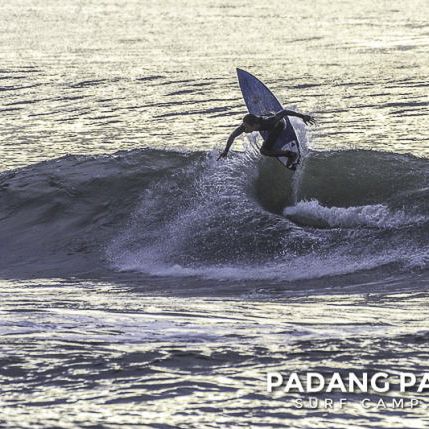
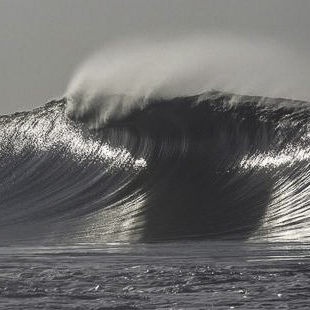
Car Parks
Car Parks is located directly in front of where you park your vehicle. This is a shifty wave that breaks left and right but often closes out. Best on a small swell at mid tide.
Keramas
Keramas is Bali’s high performace hot spot. Hosting several pro tour events, here is where you will find top surfers blasting huge airs and big turns. The wave is best on a high tide, and is consistently 5-star during the wet season. The wave itself is a heavy right wall that barrels from the takeoff when big. The power and the speed of the wave will cause you to do the best turns of your life, when you can get a wave off the locals and the pros.
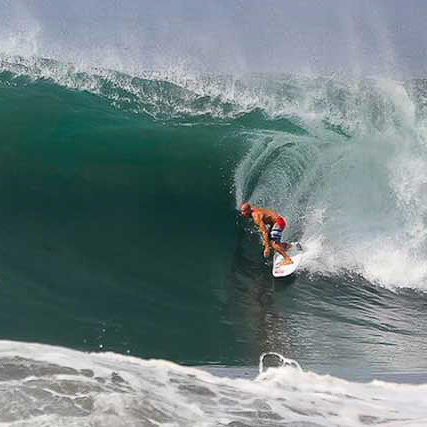
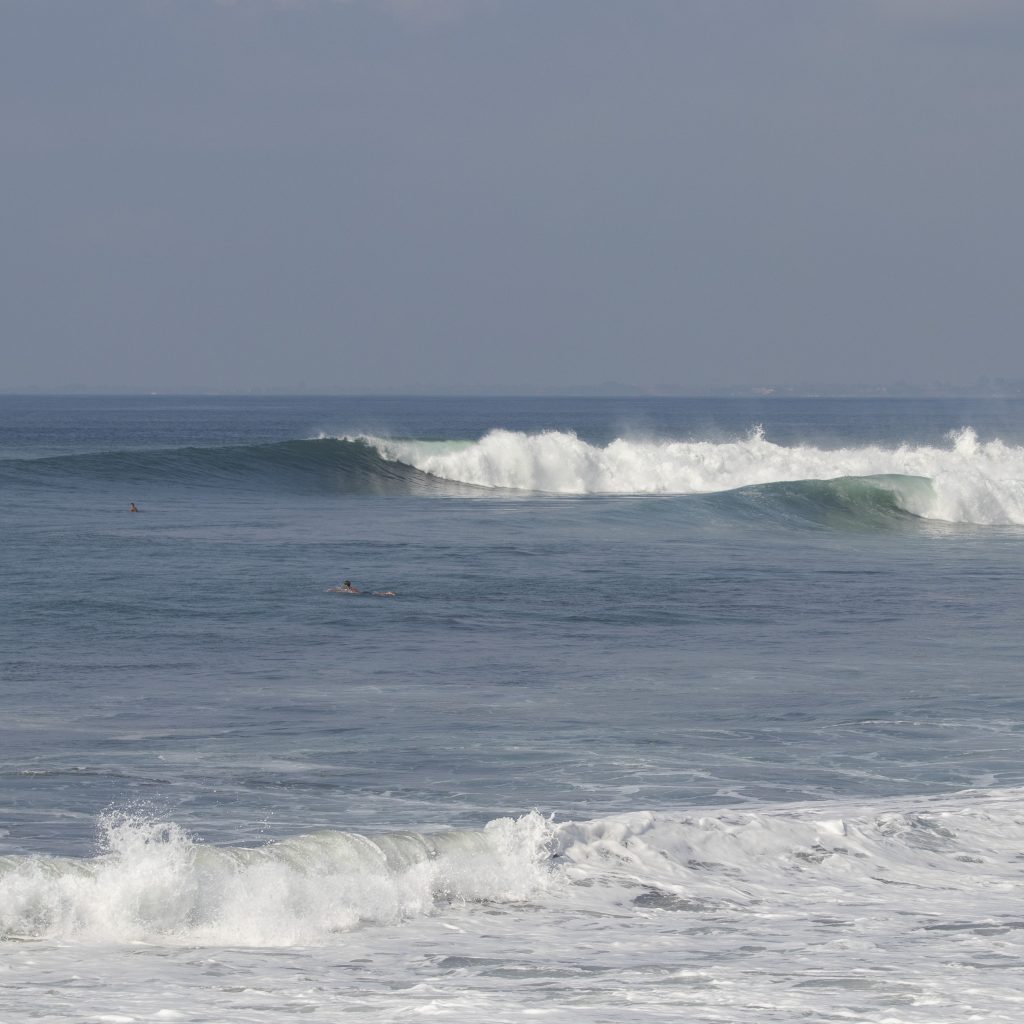
Klotok
Klotok is a secluded right pointbreak that breaks along a headland. Given its location far away from tourist accommodation, the wave is often empty. The wave is known for its chunky, long walls; however, recent shoreline development has resulted in backwash affecting the lineup once the tide gets too high.
Candi dasa
Candi dasa is known for great snorkelling and diving. It’s a beautful village located on the main road running up the east coast. It is usually flat, but on the very biggest south swells there is a beach break that breaks left and right which is suitable for interemediate surfers.
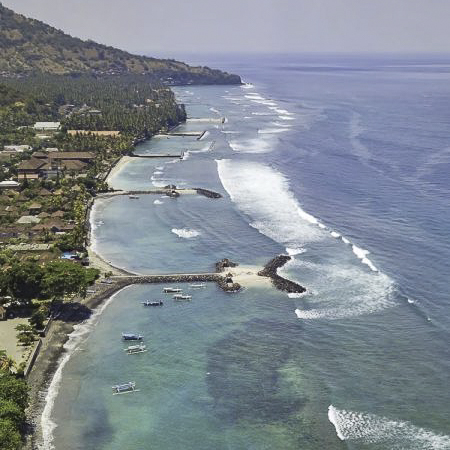
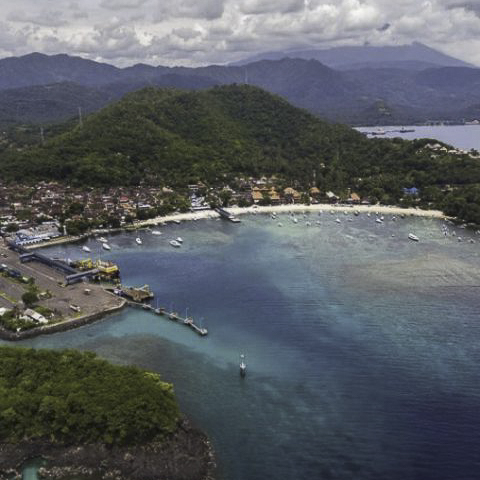
Padang bai
Padang Bai has a ferry port. It also has 2 surf spots. A left hand point break that is to the south of the harbor. There is also a beach break called blue lagoon that breaks left and right and is suitable for intermediates and beginners. When everywhere else is too big to surf, it can be worth the trip up the coast to check out the point break.
Jasri
Jasri is a beautiful right point several hours up the east coast from Kuta. It is the most northerly surf break in Bali and needs a solid south swell. The wave breaks over a colourful coral reef with Mount Agung visible in the distance from the lineup. The long wave boasts several sections, and on a good one, you can connect from the outside all the way down the reef. You must time your entry and exit along the rocky shoreline, so it is best to watch others to determine where to enter and exit the water.
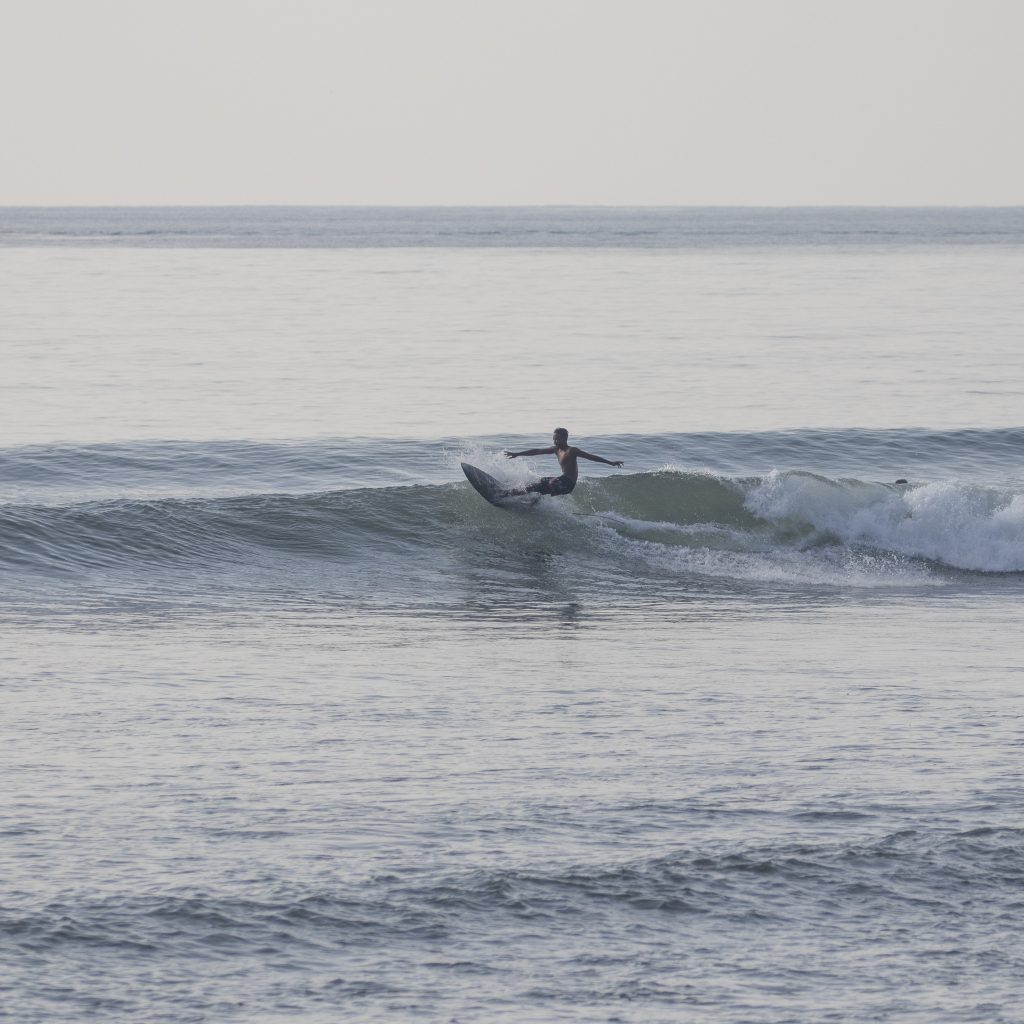
West Coast
The west coast of Bali is stunningly beautiful, particularly if you like black sand beaches with mountains in the background. Much less developed and more relaxed than the popular hotspots of Canggu and Uluwatu.

Balian
Balian is a perfect A-frame river mouth break. A deep water channel etched out for thousands of years by water running from the mountains funnels waves just where you want them: in front of Beach Villa Balian. In addition to the A-frame peak, there is an inside left that has some protection from the trade winds and is popular with intermediate surfers. On the other side of the river is a dredging barrelling right-hander that is more suitable for advanced surfers.
Truck Stops
Truck stops is located mid way between Medewi and Balian. It is no named as it is a rest area for the trucks that bring provisions from Java to Bali. It’s a high tide break that is breaks left and right. It could not be described as world class but most days no one surfs it and is a good option to get away from the crowds on a small day.
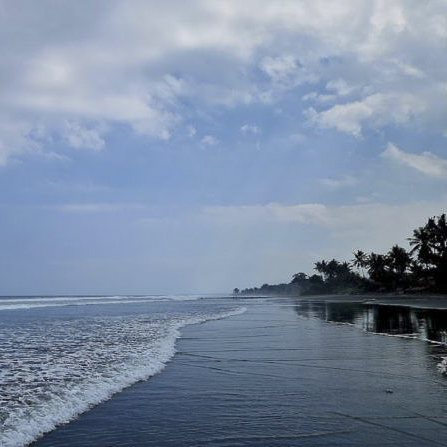
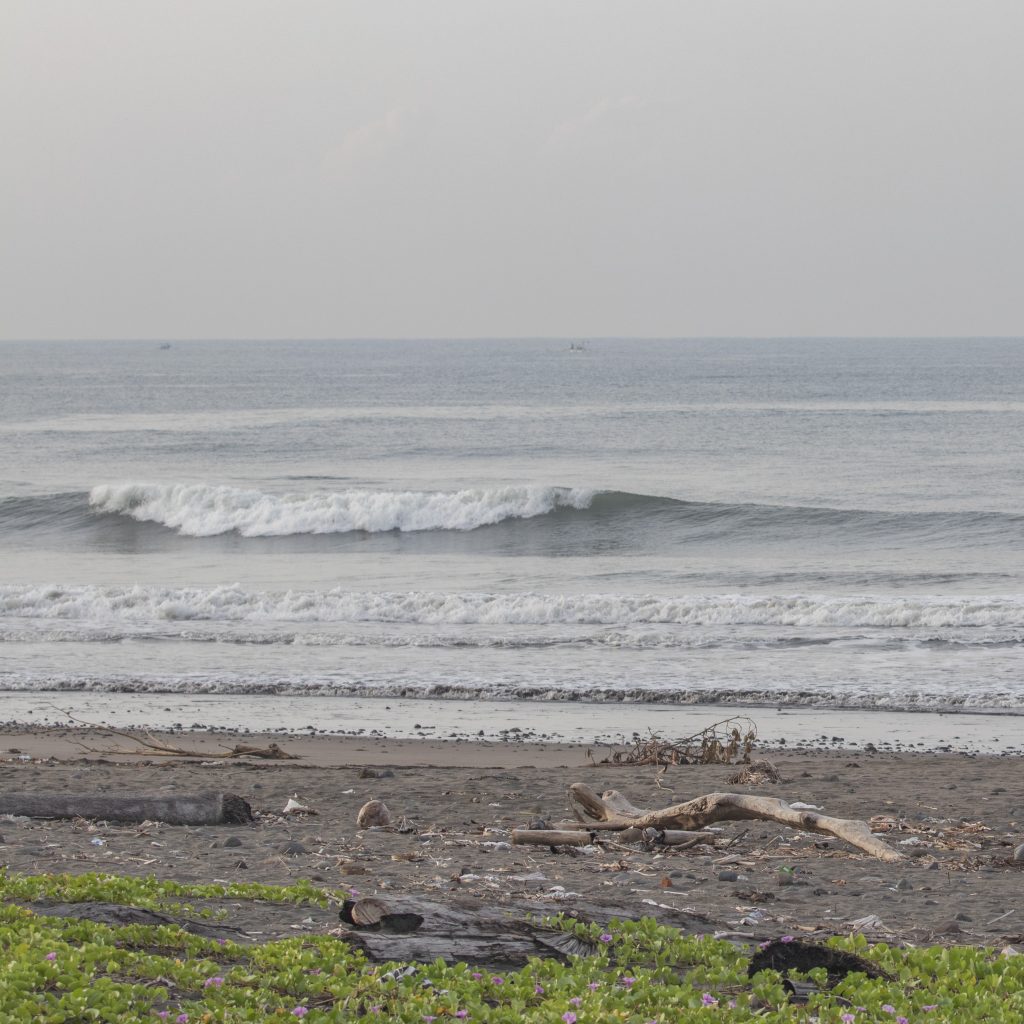
Pulukan Beach
Just before you arrive at Medewi, you can find Pulukan Beach. Here, there are two peaks, which offer a left and a right, breaking into each other. This break works on a low to mid tide, and works best when the tide is too low for Medewi. If the swell is over head this break will close out.
Medewi
Medewi is a soft left-handed point break. Access into and out of the water is difficult. Long, soft rides make it a popular spot for intermediate surfers. Southerly swells produce the goods here, but westerly swells can miss Medewi unless very big, as Java blocks the swell window. There are a number of beach breaks nearby suitable for beginner surfers.
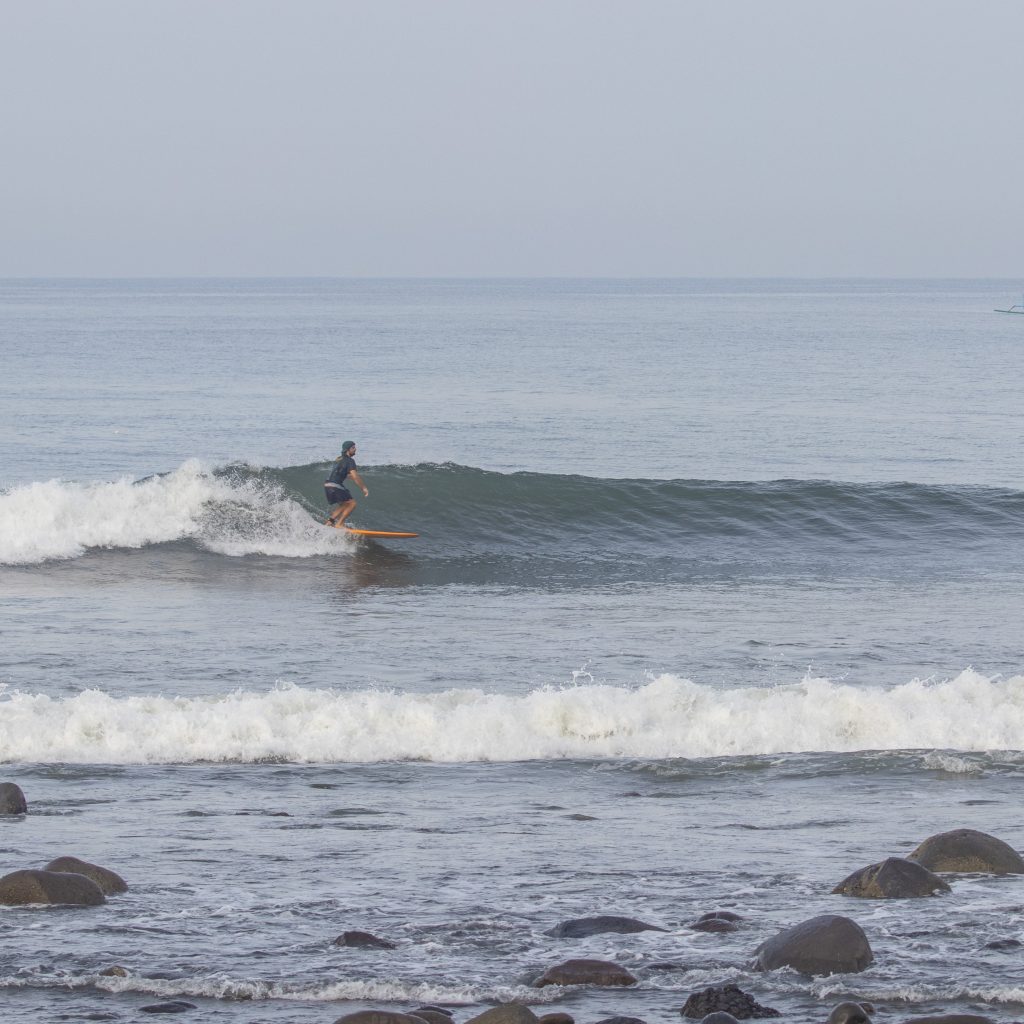
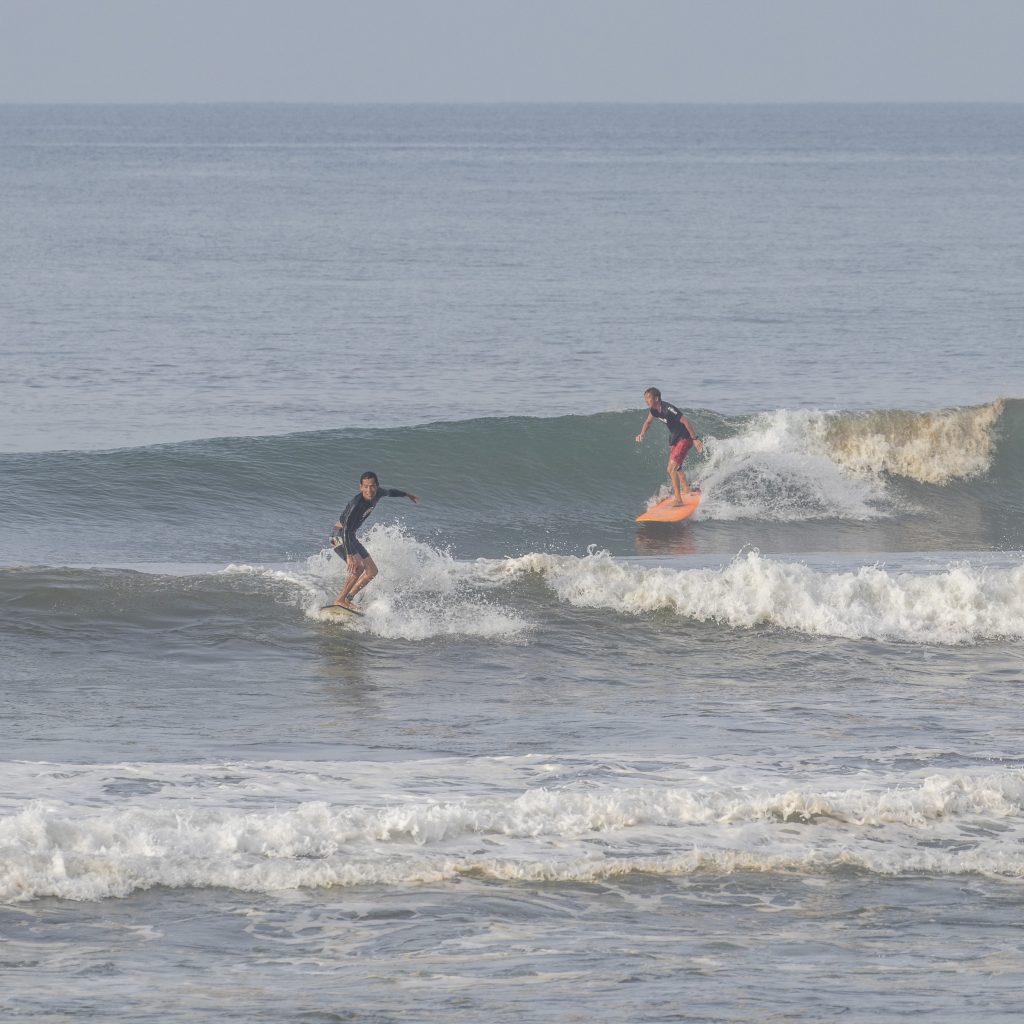
Yeh Sumbul
Pantai Yeh Sumbul is a lengthy beach made up of several peaks that are often less surfed than other breaks in Bali. On small days, these are excellent for learning to surf. The peaks can offer fun lefts and rights on the right day, and it is a good place to escape the crowd. On big days, this break transforms into a barrel machine for experts only.
Negara
Negara is the most westerly surf break in Bali. It only breaks on the biggest swells as Java will completely block a west swell and most of a south swell. If Medewi is too big and you want to get a wave then you are guaranteed it will not be crowded. Like most breaks the peak is shifty. Breaks best at mid to high tide.
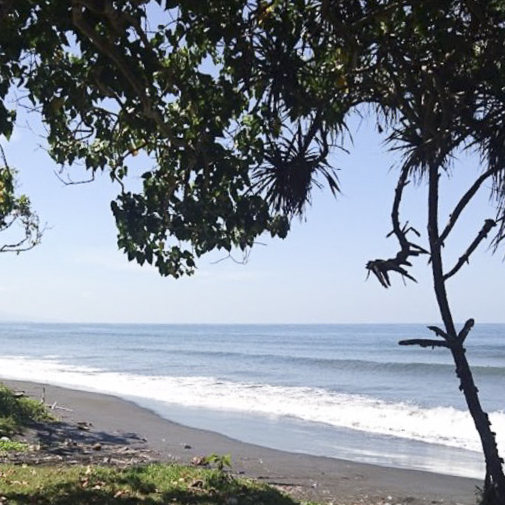
Nusa Lembongan
Not on Bali island, these offshore breaks are administered by Klungkung regency and as such are part of Bali’s territory. There are fast boats whizzing back and forth hourly between Bali and Nusa Lembongan. If you think you are escaping Bali crowds, then you will be joining thousands of other people with the same mindset, and making your own crowd.

Playgrounds
As it’s name suggests this is an easy wave very suitable for beginner and intermediate surfers. It breaks very close to the shore and tends to get very crowded. Breaks both left and right but the left is the better quality wave.
Lacerations
Lacerations is an advanced right hander that barrels over shallow water. Be very careful here with wave selection as you don’t want to end up in the local hospital with lacerations. This is the most challenging wave to surf in this area but as with all quality barrelling waves it attracts surfers looking for a magic ride, so can get very crowded.

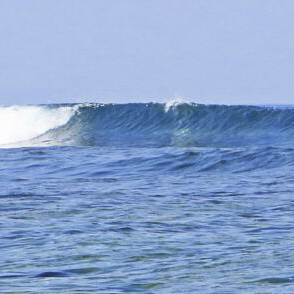
Razors
Razors is a quality left hander that can get very very good. On smaller days it is suitable for intermediates but when the swell picks up, it is advanced surfers only. On low tide it gets very shallow and barrels but be careful of the razor sharp reef.
Shipwrecks
Shipwrecks is a bit further to paddle than the other breaks nearby. It is a popular spot for shipwrecks, one if which is permanently in the location. It’s a short right hander that is very powerful and quite hard to make.
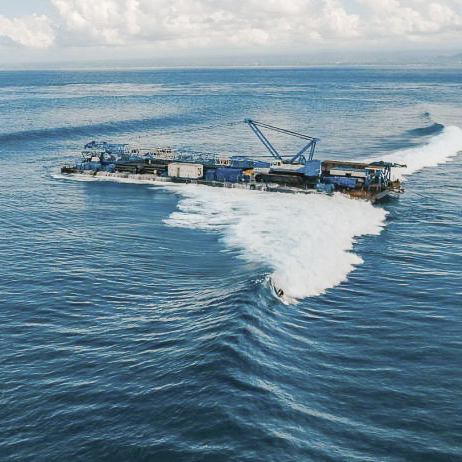
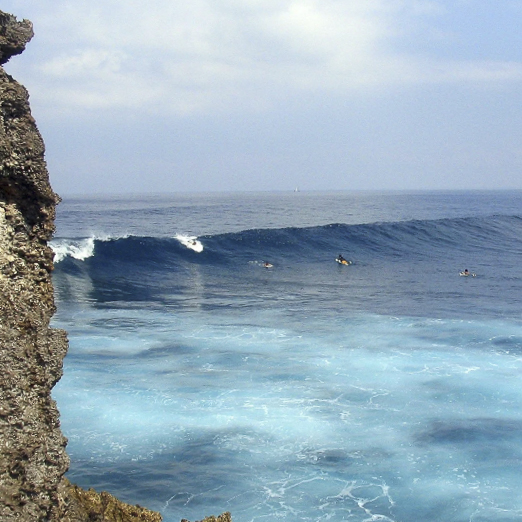
Ceningan
Ceningan is a left hand point break that is less crowded than the Nusa Lembongan breaks as harder to access. It is a soft wave but breaks with good definition and can be perfect for intermediate surfers.